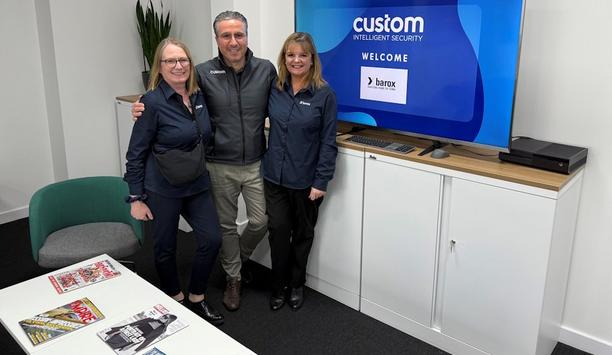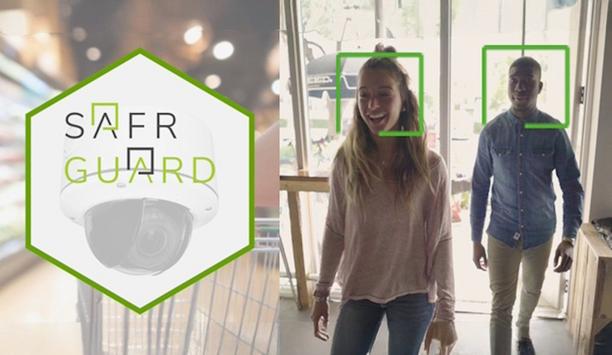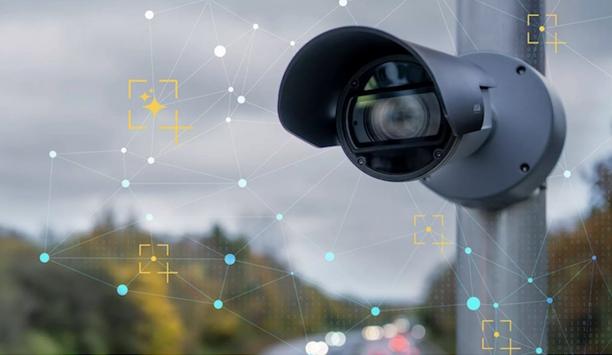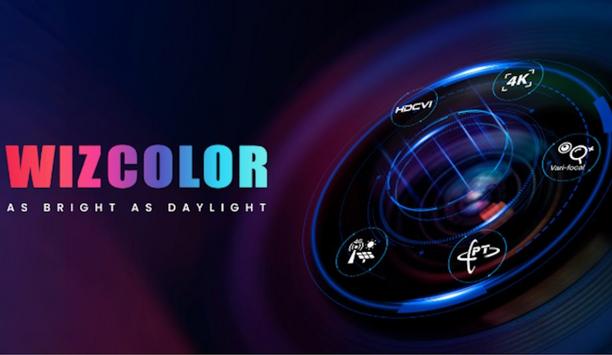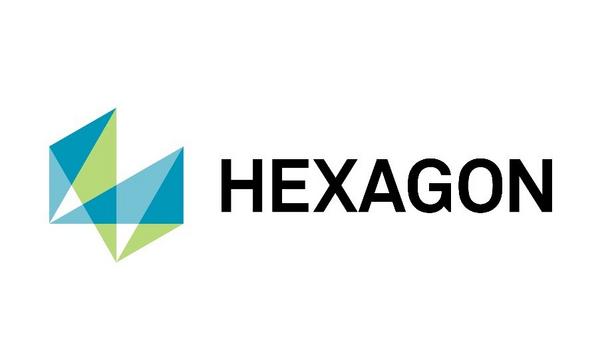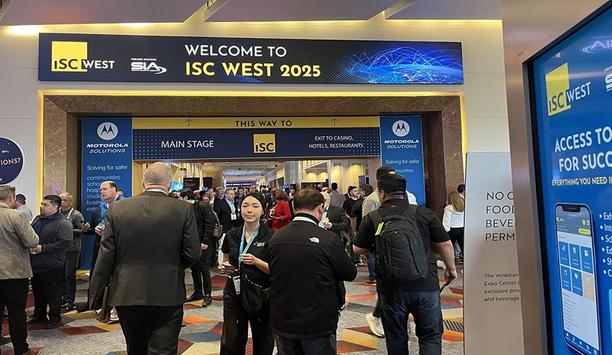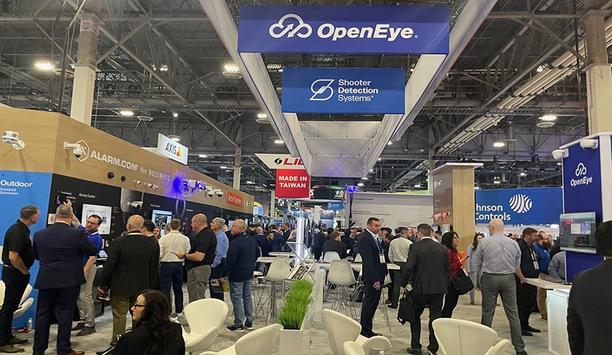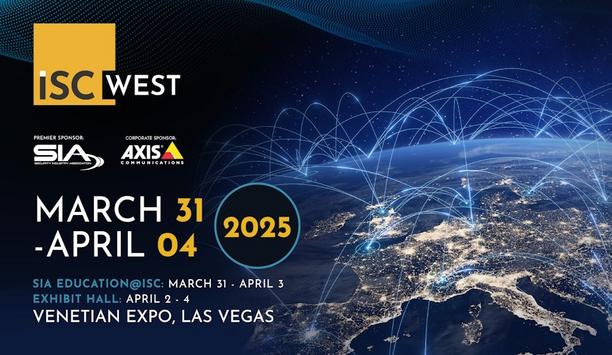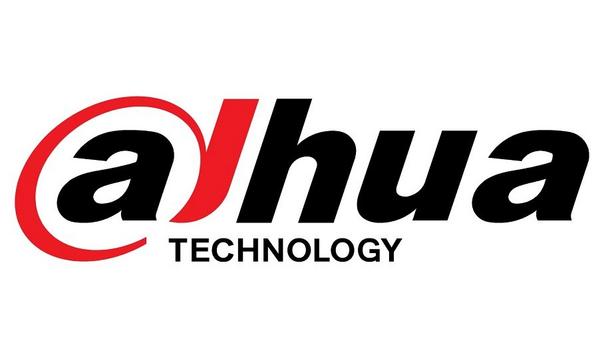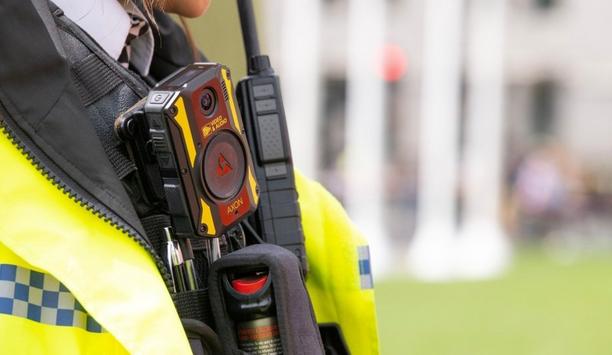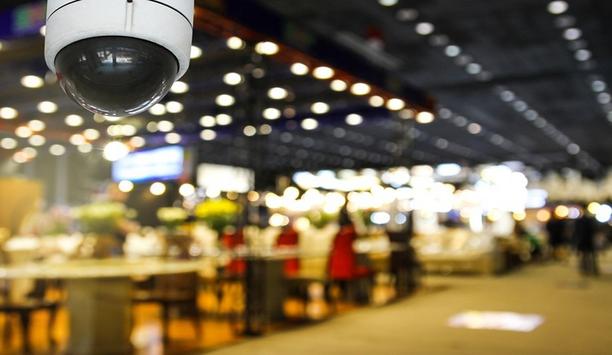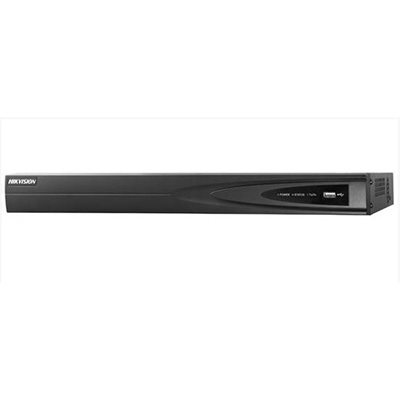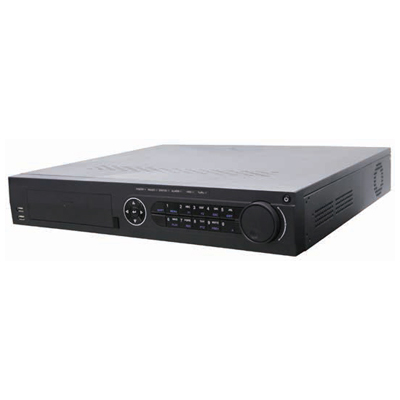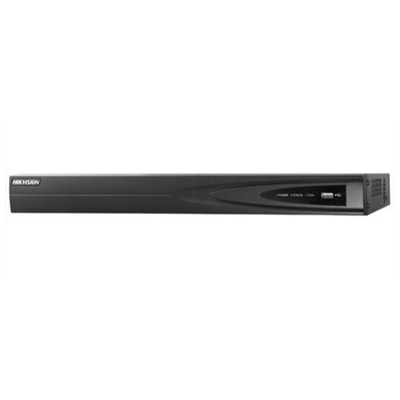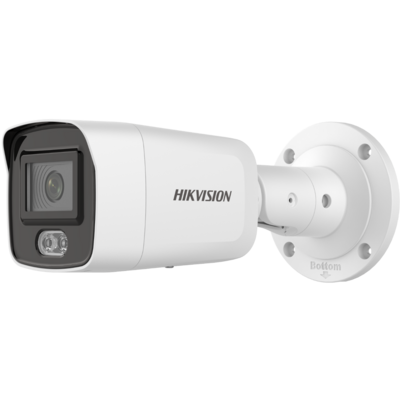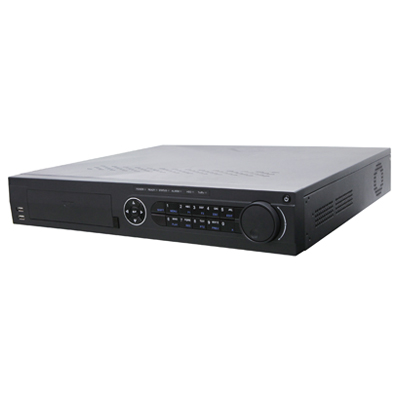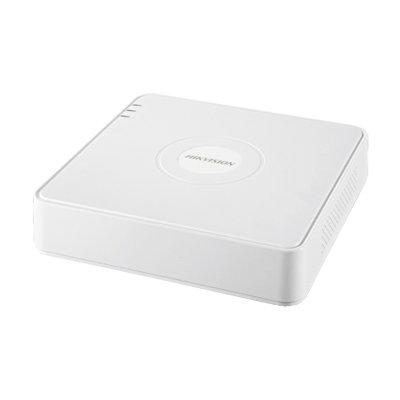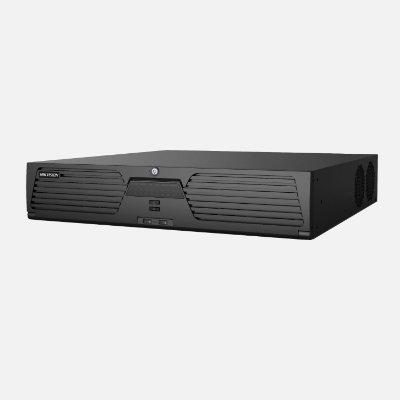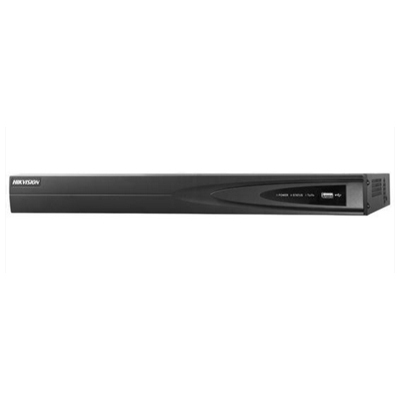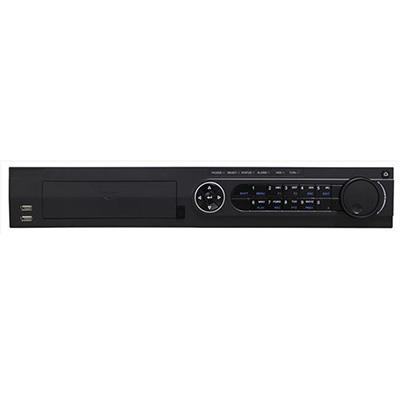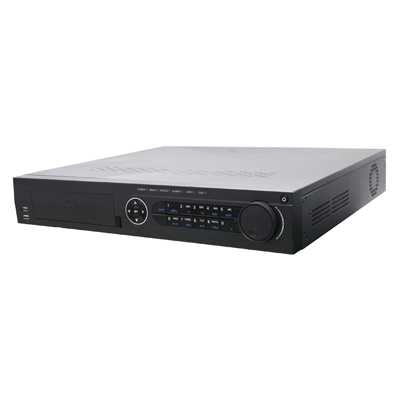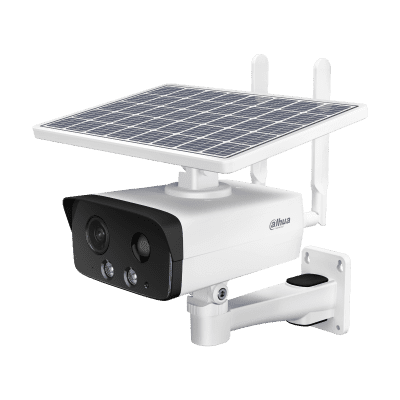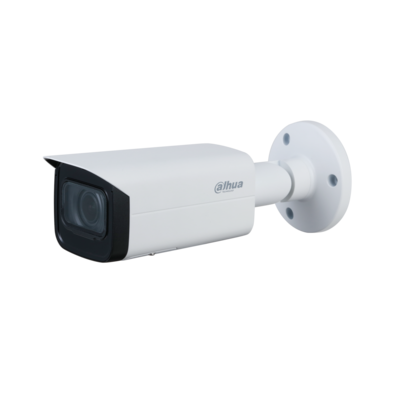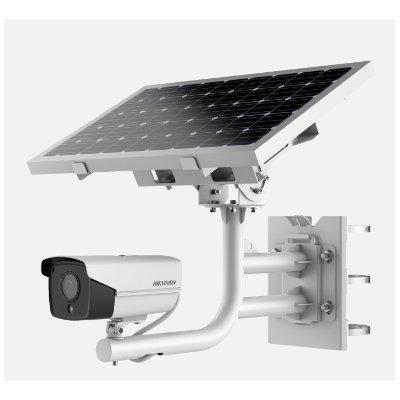Network Video Recorders
Custom Intelligent Security specialises in risk analysis, system design, installation, and maintenance of unified high-security solutions. Their extensive portfolio includes Government, commercial, and enterprise-level clients who demand scalable, secure, and robust security solutions. Next-generation security solutions barox Kommunikation is delighted to announce its partnership with Custom Intelligent Security barox Kommunikation is delighted to announce its partnership with Custom Intelli...
CSignum, the pioneering provider of wireless technology extending IoT communications beneath the surface, has completed a £6 million Series A funding round. The investment will accelerate growth of its EM-2 family of products which are transforming the way critical wireless sensor data is transmitted from submerged environments to networks above. CSignum to expand its presence New investment enables CSignum to expand its global presence, accelerate product development The funding round...
According to a recent report by Verified Market Research, the Forklift Camera Systems Market is projected to grow from USD 500 million in 2023 to USD 2.4 billion by 2030, expanding at a CAGR of 16.8% over the forecast period (2024–2030). This growth is attributed to rising safety standards, regulatory compliance, and the need for improved operational efficiency across global industrial environments. Advanced forklift camera systems SharpEagle Technology, a provider of forklift safety ke...
SAFR, a pioneer in AI-powered security solutions, announced the launch of SAFR® Guard, a powerful new product purpose-built for the Retail Loss Prevention and Asset Protection market. Designed to prevent shoplifting and retail crime before it happens, SAFR Guard makes shopping better and safer for both customers and employees. SAFR Guard delivers unmatched accuracy, speed, and simplicity while also respecting consumer privacy. SAFR’s proven AI platform SAFR Guard brin...
Axis Communications, the industry pioneer in video surveillance, has released its latest research report, ‘The State of AI in Video Surveillance,’ which explores global industry perspectives on the use of AI in the security industry and beyond. The report reveals current attitudes on AI technologies thanks to in-depth interviews with AI experts from Axis’ global network and a comprehensive survey of more than 5,800 respondents, including distributors, channel partners, and end...
GOST® (Global Ocean Security Technologies), a world pioneer in marine security, tracking, monitoring and video surveillance systems, announced strategic company restructuring and leadership changes to better serve its customers and further expand the company’s reach around the world. GOST founder and Chief Technology Officer, Brian Kane will now lead the company as President and Chief Executive Officer, effective immediately. This new appointment comes as Jay Keenan transitions to the...
News
FLIR, a Teledyne Technologies company, unveiled FLIR MIX, an advanced multispectral imaging solution designed to bring greater detail and accuracy to infrared imaging. By blending thermal and visible-light imagery, FLIR MIX gives researchers and engineers a powerful new way to analyse, interpret, and share complex thermal environments with greater accuracy. The Challenge: Full picture The camera and software work together to deliver one dataset with spatial and temporal alignment Until now, researchers have had to choose between thermal and visible imaging: one reveals heat signatures while the other provides structural detail. Recording both and trying to align them manually—or harder still, synchronising them temporally—can be inconsistent and time-consuming. The result is data that's close but never quite complete. FLIR MIX is a game changer, capturing and synchronising high-speed thermal and visible imagery at up to 1,004 frames per second. The camera and software work together to deliver one dataset with spatial and temporal alignment—no more missed details or second-guessing, just a complete picture of fast-moving events. Two kits: One software; infinite possibilities FLIR MIX Starter Kits are purpose-built solutions designed to synchronise high-speed thermal and visible imagery with precision, delivering the insights researchers need to push the boundaries of discovery. FLIR MIX X-Series Starter Kit: Optimised for high-speed research applications, including airbag testing, materials analysis, and ballistics, this kit pairs FLIR X69xx thermal cameras with a high-speed visible camera, precision optics, custom mounting hardware, and seamless connectivity—all powered by FLIR Research Studio for intuitive data analysis. FLIR MIX A-Series Starter Kit: Built for applications such as electronics design, renewable energy, and battery testing, this kit is designed to integrate with FLIR A67xx thermal cameras, offering a versatile visible imaging setup, custom mounting, and robust networking solutions to ensure precision data capture. FLIR MIX Toolkit: For researchers who want to merge thermal and visible footage in post-processing, the FLIR MIX Toolkit is available as an add-on licence to an existing Research Studio Professional Edition licence. It removes the complexity of traditional post-processing by synchronising every thermal and visible frame in real-time, delivering one complete dataset for faster, clearer insights. Whether tracking material stress, analysing fluid dynamics, or capturing high-speed impacts, researchers can focus on discovery instead of fixing misaligned data. What you see is what you measure, exactly when it happens. FLIR MIX thermal analysis "FLIR MIX simplifies thermal analysis by combining quality thermal and visible imagery in real-time in one easy-to-use hardware and software package," said Matthew Hasty, Senior Global Product Manager at FLIR. "The solution empowers researchers to achieve precise spatial alignment with radiometric data for every pixel, providing detailed temperature insights across the entire image, making analysis more straightforward while shortening the time to discovery."
As organisations navigate an increasingly complex threat landscape, security pioneers are making strategic shifts toward unified platforms and emerging technologies, according to the newly released 2025 State of Security and Identity Report from HID. The comprehensive study gathered responses from 1,800 partners, end users, and security and IT personnel worldwide, and reveals a significant transformation in how businesses are approaching security, with mobile credentials and artificial intelligence emerging as key drivers of innovation. Integration of modern technology "The security industry is at a pivotal moment where the integration of modern technology with existing infrastructure is no longer optional—it's imperative," said Ramesh Songukrishnasamy, Sr. VP of Engineering at HID. "The fact that 73% of security pioneers now prioritise software-driven unified solutions shows we've moved beyond traditional siloed approaches. Organisations are demanding platforms that can scale with their needs while providing actionable intelligence." Key findings from the report A marked increase in mobile credentials and biometrics adoption, signalling a shift away from traditional access methods The rapid rise of mobile credentials, with 61% of security pioneers identifying their proliferation as a top trend, signals a significant shift away from traditional access methods. Nearly two-thirds are either deploying or planning to deploy mobile solutions. Concurrently, demand for biometric technologies such as fingerprint, iris, and facial recognition is on the rise: about 35% of respondents currently use biometric technology, while 13% plan to, indicating significant growth potential in this segment. Growing demand for unified security management solutions that streamline operations As organisations diversify security technology now, many security pioneers (67%) are making moves to adopt software-driven security solutions, citing that unifying multiple data collection methodologies would be “somewhat” or “very important” (73%) to their organisation. Strong preference for open platforms that facilitate seamless integration Interoperability has become synonymous with progress across the security industry over the last few years, and the trend continues as more than half of security professionals reported open solutions as being “extremely” or “very” important to their organisations. Strategic focus on converging platform solutions rather than standalone products Nearly two thirds of organisations and 73% of integrators and consultants report a shift toward software-driven security solutions that bridge physical and digital functions like video surveillance, access control, and intrusion detection into a more unified platform. Significant channel transformation driven by digital innovation The security channel is undergoing significant transformation driven by digital innovation. While 77% of channel partners believe they are adapting well to these changes, growing end-user demand for AI, cloud solutions, IoT integration, and advanced analytics is reshaping service expectations. To thrive, the channel must continuously evolve and adapt to meet the evolving needs of the market and keep pace with digital transformation within the security sector. Accelerated adoption of AI agents to enhance security operations AI agents are being rapidly adopted to enhance security operations. Use cases are proliferating across access control, identity management, video, and security management platforms. Key benefits cited include improved efficiency and speed of security processes (50%) and enhanced real-time data analysis capabilities (47%). Continued emphasis on sustainability in security decision-making, budget allowing Sustainability is still a key factor in security decision-making, with 75% of security pioneers now factoring it into their solution selection process. However, sustainability is not the most critical factor when selecting new solutions as security and cost-effectiveness are still the highest priority for 80% of integrators and consultants.
iDenfy, a globally recognised pioneer in regulatory technology specialising in identity verification (KYC), anti-money laundering (AML), and business verification (KYB), introduced its new KYC solution for Shopify merchants. The new app is listed on Shopify as a user-friendly, no-code solution for Shopify users who don’t want to build an ID verification solution from scratch. Automated verification system iDenfy’s integration provides online businesses with an automated verification system that ensures compliance while reducing fraud risks, helping save time and costs on integration and KYC management. The alarming rise in e-commerce fraud, with losses exceeding $44.3 billion in 2024 alone, underscores the urgent need for more robust verification methods. iDenfy's KYC app Shopify store owners can now offer customers the ability to download iDenfy's KYC app Traditional approaches such as basic age gates, where a user checks a box agreeing they’re “of age”, or manual document reviews, which require hiring skilled personnel, are no longer effective or efficient against sophisticated threats like deepfakes, stolen identities, and synthetic fraud. Shopify store owners can now offer customers the ability to download iDenfy's KYC app directly from the Shopify Store. New AI-powered identity verification According to Domantas Ciulde, the CEO of iDenfy, e-commerce platforms need the checkout process to be as quick as possible, and with age-restricted service providers or those who sell items like alcoholic drinks online, this can be an issue: “Our plugin on Shopify will solve the hassle for merchants that are looking for a KYC solution that does both, ensures a good user experience and KYC compliance.” When a user attempts to purchase age-restricted products or high-value items, the system asks to verify the customer's face. This new AI-powered identity verification plugin offers Shopify merchants a secure, scalable, and fully automated user onboarding that is able to verify customers in real time while effectively preventing fraud, such as unauthorised transactions, before they occur. Reliable ID verification system The integration process is designed with simplicity in mind, requiring no coding expertise The integration process is designed with simplicity in mind, requiring no coding expertise. Merchants can activate KYC checks directly through Shopify's admin panel, making advanced fraud prevention accessible to businesses of all sizes. For sectors like e-commerce, according to Domantas Ciulde, this is very important, as some Shopify merchants are small businesses that don’t have the internal infrastructure for automating compliance processes but still need a reliable ID verification system. Automated ID document For businesses selling age-restricted goods such as alcohol, tobacco, or CBD, as well as high-value items like electronics, luxury products, or pharmaceuticals, reliable identity verification is not just a security measure but a legal necessity. iDenfy's solution addresses this need by combining automated ID document checks with biometric facial recognition, ensuring that every shopper is genuine and properly verified before completing a purchase. Instant ID recognition and extraction A key feature of iDenfy's solution is its advanced biometric face matching iDenfy's technology delivers instant ID recognition and extraction, capable of reading and verifying over 3,000 identity documents, including passports, ID cards, driver's licences, and permits, from more than 200 countries and territories. A key feature of iDenfy's solution is its advanced biometric face matching. Using sophisticated 3D face mapping technology, the system confirms that the user is physically present during verification, effectively preventing attempts to bypass security with photos, videos, masks, or deepfakes. Capabilities of iDenfy's system These real-time fraud prevention capabilities of iDenfy's system allow merchants to flag suspicious identities before transactions are completed. The system proactively prevents fraudulent transactions by requiring customers to verify their identity at checkout, either by scanning a QR code with their smartphone for high-quality facial authentication or using their current device if the camera meets verification standards. This dual-approach ensures robust fraud prevention without compromising user convenience. KYC and age verification requirements The AI-powered verification can be completed in under 3 minutes to reduce time friction For global compliance, the solution automatically enforces KYC and age verification requirements by cross-checking government-issued ID data (including birthdates and document authenticity). This eliminates the need for error-prone manual reviews while ensuring adherence to regional regulations. This method significantly reduces chargebacks, false declines, and the workload associated with manual reviews, helping businesses to maintain secure operations while optimising the best customer experience. The AI-powered verification can be completed in under 3 minutes to reduce time friction for legitimate customers while blocking fraudulent attempts to bypass the verification process. Importance of advanced verification Domantas Ciulde, CEO of iDenfy, emphasised the importance of advanced verification in the e-commerce landscape: "E-commerce fraud is evolving rapidly, and outdated verification methods can't keep up." "Our Shopify integration gives merchants an all-in-one fraud prevention solution that combines AI-powered ID checks with biometric authentication. The result is fewer chargebacks, higher customer trust, and seamless compliance with global regulations."
Dahua Technology, a world-pioneering video-centric AIoT solution and service provider, proudly released the newest addition to its WizColor product offerings. Equipped with an artillery of intelligent functions tailored to meet the needs of various scenarios, the WizColor technology expands its capabilities with five innovative categories: WizColor + 4K, WizColor + PT, WizColor + Vari-focal, WizColor + HDCVI, and WizColor + 4G. WizColor + 4K: Brilliant nights, clear details The WizColor technology, combined with 4K resolution, ensures that all elements remain sharp and well-defined when enlarged, preserving fine details while enhancing both visual quality and viewer engagement. It offers 4K resolution with enhanced detail preservation, superior nighttime clarity with minimised image noise and blur, and AI-ISP optimisation for vivid and natural image colours. WizColor + PT: No blind spots at night PT camera secures all-round guard with its multi-directional monitoring and flexible PT abilities Equipped with WizColor technology, the PT camera ensures all-round security with its multi-directional monitoring and flexible PT adjustment capabilities, making it ideal for various SMB surveillance needs. It provides 360° all-around surveillance, versatility with various application scenarios, and dual lenses in one single camera. WizColor + Vari-focal: See farther at night These vari-focal cameras with WizColor technology effectively solves the issue of blurry details in full-color cameras at night. Its zoom capability enables clear visibility of distant details even in low-light environment. Aside from clear image details at night, these products also offer a comprehensive surveillance of both panoramic and detail views, as well as adjustable focal length to change the camera’s field of view, enabling a single-lens camera to monitor multiple areas effectively and improving surveillance efficiency. WizColor + HDCVI: See beyond the night, powered by HDCVI HDCVI technology enables long-distance HD video dispatch over a wide range of application scenarios The High Definition Composite Video Interface (HDCVI) technology enables long-distance HD video transmission over a wide range of application scenarios at a budget-friendly cost. Aside from enhanced color and low-light performance, the integration of HDCVI technology with WizColor also provides users with other monitoring benefits. It supports dual mic technology that significantly improves audio clarity and pickup distance, ensuring the authenticity and reliability of the collected audio information. It is also equipped with LDC technology that corrects the overall image distortion to make the monitored scene consistent with the real scene. WizColor + 4G: 4G connected. Unlimited runtime, day and night For 4G battery-powered cameras, the activation of supplementary lights at night is undoubtedly wasteful of energy and contributes to light pollution. The WizColor technology eliminates the need for additional illumination in the monitored scene during nighttime, thereby extending the device's operational longevity and fostering a more environmentally friendly approach to surveillance.
Hexagon AB announced an agreement to acquire the Unified Communications Radio Suite (UCRS) software assets of CONET Communications GmbH (CCOM), part of CONET Group, to complement its public safety platform. UCRS is a high-performance communication solution for control centres capable of integrating diverse channels such as Private Branch Exchange (PBX) and mobile phone networks, digital radio, business information systems, public address systems, video surveillance (CCTV), video conferencing, and satellite communication infrastructures. Hexagon's public safety platform Successful customers such as the Kassel Fire Brigade already benefit from the combined Hexagon Combining UCRS with Hexagon's public safety platform will provide agencies with a fully integrated command-and-control solution from one vendor. Successful customers such as the Kassel Fire Brigade already benefit from the combined Hexagon and CONET offering. “Seamless communication is an essential part of emergency response. Public safety agencies must be able to communicate with responders in a variety of ways, making the addition of CCOM’s product suite a natural extension of Hexagon’s technology stack,” said Norbert Hanke, interim President and CEO, Hexagon. “This acquisition strengthens our ability to serve public safety customers today while accelerating innovation for the future.” CCOM’s UCRS solution CCOM’s UCRS solution, supported by around 50 employees, will be reported within Hexagon's Safety, Infrastructure & Geospatial division and is expected to generate revenues of around ~10 MEUR in 2025 with margins similar to SIG averages. Completion of the transaction is subject to regulatory approvals and other customary conditions and is expected to be finalised by the end of Q2 2025.
Powering digital access with energy-harvesting technology frees organisations from wiring and even batteries. However, to meet the challenges of the future, digital access needs more. It needs technologies and software platforms flexible enough to grow and adapt with the evolving needs of each organisation, protecting their investment in digital access while delivering an ROI every day. Digital access solutions Kinetic energy generated by inserting the intelligent key is harvested to power the lock’s security features Using decades of expertise in designing and engineering key-based access cylinders and solutions, ASSA ABLOY developed PULSE, key-based digital access powered by innovative energy-harvesting technology and part of ASSA ABLOY's suite of digital access solutions. With ABLOY PULSE, the kinetic energy generated by inserting the intelligent key is harvested to power the lock’s encrypted digital security. This energy source – keyholder input – is completely renewable and contributes to building sustainability goals. Latest generation of technology Building users enjoy everyday convenience. They carry one PULSE key pre-programmed with all their access rights. It has an RFID tag inside and can also operate readers, whether on wireless locks or wall-mounted beside an electrified opening. Building users do not need to carry two credentials. To enhance site security and user privacy, PULSE credentials are powered by Seos®, the latest generation of technology with the highest encryption and authentication standards. ABLOY PULSE building managers PULSE locking cylinders and keys are self-powered by reliable energy-harvesting technology ABLOY PULSE offers building managers reliable security they can trust. They can equip almost any opening with a device range which includes door cylinders, cam-locks, furniture locks and padlocks for indoor and outdoor use. There is no cabling, wiring or batteries required: PULSE locking cylinders and keys are self-powered by reliable energy-harvesting technology. Integrate with building solutions “ABLOY PULSE offers customers a flexible solution to digitalise their access management and make their access ready for what’s ahead. It has been developed to integrate easily with their building solutions,” says Jarno Onnela, PULSE Product Manager at ABLOY. “PULSE cylinders are fast and cost-efficient to install, because they require no major adjustments to a door. An installer simply swaps out an existing mechanical cylinder.” ASSA ABLOY Access® software ABLOY PULSE can be managed from cloud-based ASSA ABLOY Access® software ABLOY PULSE can be managed from cloud-based ASSA ABLOY Access® software. This intuitive solution enables organisations to manage access from anywhere. Both keys and cylinders are reusable and reprogrammable: managing staff turnover becomes faster and simpler for facilities teams. Security staff can issue access and block lost keys from wherever they are. Advantages of PULSE technology The unique advantages of PULSE technology have already been recognised by awards juries in Europe, the Middle East and beyond. It was named the Sustainability Champion Award winner at Intersec 2024, Dubai. In 2022, PULSE cylinders’ energy-harvesting performance earned the Construction Energy Award at the BYGGERI fair in Denmark. ABLOY PULSE commercial buildings The unique advantages of PULSE technology have already been recognised by awards juries in Europe “ABLOY PULSE already protects many different types of site, from commercial buildings and multi-residential housing, to education and healthcare premises,” adds Jarno. “New functionalities in ASSA ABLOY Access management software, such as support for reservation systems, continue to further expand use-cases. We have also extended the availability of this innovative solution to new markets including Scandinavia, France, the UK, Poland, Singapore, Hong Kong and Benelux countries.” Extend the range of locking solutions with ASSA ABLOY Access ASSA ABLOY Access also integrates seamlessly with the ABLOY CUMULUS mobile and keyless access solution. Completely customisable, with intuitive APIs and SDKs for app development, CUMULUS becomes part of each customer’s individual workflows in a way specific to their own organisation. In addition, the revolutionary CUMULUS Controller adds mobile access capability to any electric or electronic lock – from any brand. ABLOY CUMULUS instantly makes digital access mobile-ready. It can go wherever the customer needs.
FLIR, a Teledyne Technologies company, unveiled FLIR MIX, an advanced multispectral imaging solution designed to bring greater detail and accuracy to infrared imaging. By blending thermal and visible-light imagery, FLIR MIX gives researchers and engineers a powerful new way to analyse, interpret, and share complex thermal environments with greater accuracy. The Challenge: Full picture The camera and software work together to deliver one dataset with spatial and temporal alignment Until now, researchers have had to choose between thermal and visible imaging: one reveals heat signatures while the other provides structural detail. Recording both and trying to align them manually—or harder still, synchronising them temporally—can be inconsistent and time-consuming. The result is data that's close but never quite complete. FLIR MIX is a game changer, capturing and synchronising high-speed thermal and visible imagery at up to 1,004 frames per second. The camera and software work together to deliver one dataset with spatial and temporal alignment—no more missed details or second-guessing, just a complete picture of fast-moving events. Two kits: One software; infinite possibilities FLIR MIX Starter Kits are purpose-built solutions designed to synchronise high-speed thermal and visible imagery with precision, delivering the insights researchers need to push the boundaries of discovery. FLIR MIX X-Series Starter Kit: Optimised for high-speed research applications, including airbag testing, materials analysis, and ballistics, this kit pairs FLIR X69xx thermal cameras with a high-speed visible camera, precision optics, custom mounting hardware, and seamless connectivity—all powered by FLIR Research Studio for intuitive data analysis. FLIR MIX A-Series Starter Kit: Built for applications such as electronics design, renewable energy, and battery testing, this kit is designed to integrate with FLIR A67xx thermal cameras, offering a versatile visible imaging setup, custom mounting, and robust networking solutions to ensure precision data capture. FLIR MIX Toolkit: For researchers who want to merge thermal and visible footage in post-processing, the FLIR MIX Toolkit is available as an add-on licence to an existing Research Studio Professional Edition licence. It removes the complexity of traditional post-processing by synchronising every thermal and visible frame in real-time, delivering one complete dataset for faster, clearer insights. Whether tracking material stress, analysing fluid dynamics, or capturing high-speed impacts, researchers can focus on discovery instead of fixing misaligned data. What you see is what you measure, exactly when it happens. FLIR MIX thermal analysis "FLIR MIX simplifies thermal analysis by combining quality thermal and visible imagery in real-time in one easy-to-use hardware and software package," said Matthew Hasty, Senior Global Product Manager at FLIR. "The solution empowers researchers to achieve precise spatial alignment with radiometric data for every pixel, providing detailed temperature insights across the entire image, making analysis more straightforward while shortening the time to discovery."
As organisations navigate an increasingly complex threat landscape, security pioneers are making strategic shifts toward unified platforms and emerging technologies, according to the newly released 2025 State of Security and Identity Report from HID. The comprehensive study gathered responses from 1,800 partners, end users, and security and IT personnel worldwide, and reveals a significant transformation in how businesses are approaching security, with mobile credentials and artificial intelligence emerging as key drivers of innovation. Integration of modern technology "The security industry is at a pivotal moment where the integration of modern technology with existing infrastructure is no longer optional—it's imperative," said Ramesh Songukrishnasamy, Sr. VP of Engineering at HID. "The fact that 73% of security pioneers now prioritise software-driven unified solutions shows we've moved beyond traditional siloed approaches. Organisations are demanding platforms that can scale with their needs while providing actionable intelligence." Key findings from the report A marked increase in mobile credentials and biometrics adoption, signalling a shift away from traditional access methods The rapid rise of mobile credentials, with 61% of security pioneers identifying their proliferation as a top trend, signals a significant shift away from traditional access methods. Nearly two-thirds are either deploying or planning to deploy mobile solutions. Concurrently, demand for biometric technologies such as fingerprint, iris, and facial recognition is on the rise: about 35% of respondents currently use biometric technology, while 13% plan to, indicating significant growth potential in this segment. Growing demand for unified security management solutions that streamline operations As organisations diversify security technology now, many security pioneers (67%) are making moves to adopt software-driven security solutions, citing that unifying multiple data collection methodologies would be “somewhat” or “very important” (73%) to their organisation. Strong preference for open platforms that facilitate seamless integration Interoperability has become synonymous with progress across the security industry over the last few years, and the trend continues as more than half of security professionals reported open solutions as being “extremely” or “very” important to their organisations. Strategic focus on converging platform solutions rather than standalone products Nearly two thirds of organisations and 73% of integrators and consultants report a shift toward software-driven security solutions that bridge physical and digital functions like video surveillance, access control, and intrusion detection into a more unified platform. Significant channel transformation driven by digital innovation The security channel is undergoing significant transformation driven by digital innovation. While 77% of channel partners believe they are adapting well to these changes, growing end-user demand for AI, cloud solutions, IoT integration, and advanced analytics is reshaping service expectations. To thrive, the channel must continuously evolve and adapt to meet the evolving needs of the market and keep pace with digital transformation within the security sector. Accelerated adoption of AI agents to enhance security operations AI agents are being rapidly adopted to enhance security operations. Use cases are proliferating across access control, identity management, video, and security management platforms. Key benefits cited include improved efficiency and speed of security processes (50%) and enhanced real-time data analysis capabilities (47%). Continued emphasis on sustainability in security decision-making, budget allowing Sustainability is still a key factor in security decision-making, with 75% of security pioneers now factoring it into their solution selection process. However, sustainability is not the most critical factor when selecting new solutions as security and cost-effectiveness are still the highest priority for 80% of integrators and consultants.
iDenfy, a globally recognised pioneer in regulatory technology specialising in identity verification (KYC), anti-money laundering (AML), and business verification (KYB), introduced its new KYC solution for Shopify merchants. The new app is listed on Shopify as a user-friendly, no-code solution for Shopify users who don’t want to build an ID verification solution from scratch. Automated verification system iDenfy’s integration provides online businesses with an automated verification system that ensures compliance while reducing fraud risks, helping save time and costs on integration and KYC management. The alarming rise in e-commerce fraud, with losses exceeding $44.3 billion in 2024 alone, underscores the urgent need for more robust verification methods. iDenfy's KYC app Shopify store owners can now offer customers the ability to download iDenfy's KYC app Traditional approaches such as basic age gates, where a user checks a box agreeing they’re “of age”, or manual document reviews, which require hiring skilled personnel, are no longer effective or efficient against sophisticated threats like deepfakes, stolen identities, and synthetic fraud. Shopify store owners can now offer customers the ability to download iDenfy's KYC app directly from the Shopify Store. New AI-powered identity verification According to Domantas Ciulde, the CEO of iDenfy, e-commerce platforms need the checkout process to be as quick as possible, and with age-restricted service providers or those who sell items like alcoholic drinks online, this can be an issue: “Our plugin on Shopify will solve the hassle for merchants that are looking for a KYC solution that does both, ensures a good user experience and KYC compliance.” When a user attempts to purchase age-restricted products or high-value items, the system asks to verify the customer's face. This new AI-powered identity verification plugin offers Shopify merchants a secure, scalable, and fully automated user onboarding that is able to verify customers in real time while effectively preventing fraud, such as unauthorised transactions, before they occur. Reliable ID verification system The integration process is designed with simplicity in mind, requiring no coding expertise The integration process is designed with simplicity in mind, requiring no coding expertise. Merchants can activate KYC checks directly through Shopify's admin panel, making advanced fraud prevention accessible to businesses of all sizes. For sectors like e-commerce, according to Domantas Ciulde, this is very important, as some Shopify merchants are small businesses that don’t have the internal infrastructure for automating compliance processes but still need a reliable ID verification system. Automated ID document For businesses selling age-restricted goods such as alcohol, tobacco, or CBD, as well as high-value items like electronics, luxury products, or pharmaceuticals, reliable identity verification is not just a security measure but a legal necessity. iDenfy's solution addresses this need by combining automated ID document checks with biometric facial recognition, ensuring that every shopper is genuine and properly verified before completing a purchase. Instant ID recognition and extraction A key feature of iDenfy's solution is its advanced biometric face matching iDenfy's technology delivers instant ID recognition and extraction, capable of reading and verifying over 3,000 identity documents, including passports, ID cards, driver's licences, and permits, from more than 200 countries and territories. A key feature of iDenfy's solution is its advanced biometric face matching. Using sophisticated 3D face mapping technology, the system confirms that the user is physically present during verification, effectively preventing attempts to bypass security with photos, videos, masks, or deepfakes. Capabilities of iDenfy's system These real-time fraud prevention capabilities of iDenfy's system allow merchants to flag suspicious identities before transactions are completed. The system proactively prevents fraudulent transactions by requiring customers to verify their identity at checkout, either by scanning a QR code with their smartphone for high-quality facial authentication or using their current device if the camera meets verification standards. This dual-approach ensures robust fraud prevention without compromising user convenience. KYC and age verification requirements The AI-powered verification can be completed in under 3 minutes to reduce time friction For global compliance, the solution automatically enforces KYC and age verification requirements by cross-checking government-issued ID data (including birthdates and document authenticity). This eliminates the need for error-prone manual reviews while ensuring adherence to regional regulations. This method significantly reduces chargebacks, false declines, and the workload associated with manual reviews, helping businesses to maintain secure operations while optimising the best customer experience. The AI-powered verification can be completed in under 3 minutes to reduce time friction for legitimate customers while blocking fraudulent attempts to bypass the verification process. Importance of advanced verification Domantas Ciulde, CEO of iDenfy, emphasised the importance of advanced verification in the e-commerce landscape: "E-commerce fraud is evolving rapidly, and outdated verification methods can't keep up." "Our Shopify integration gives merchants an all-in-one fraud prevention solution that combines AI-powered ID checks with biometric authentication. The result is fewer chargebacks, higher customer trust, and seamless compliance with global regulations."
Dahua Technology, a world-pioneering video-centric AIoT solution and service provider, proudly released the newest addition to its WizColor product offerings. Equipped with an artillery of intelligent functions tailored to meet the needs of various scenarios, the WizColor technology expands its capabilities with five innovative categories: WizColor + 4K, WizColor + PT, WizColor + Vari-focal, WizColor + HDCVI, and WizColor + 4G. WizColor + 4K: Brilliant nights, clear details The WizColor technology, combined with 4K resolution, ensures that all elements remain sharp and well-defined when enlarged, preserving fine details while enhancing both visual quality and viewer engagement. It offers 4K resolution with enhanced detail preservation, superior nighttime clarity with minimised image noise and blur, and AI-ISP optimisation for vivid and natural image colours. WizColor + PT: No blind spots at night PT camera secures all-round guard with its multi-directional monitoring and flexible PT abilities Equipped with WizColor technology, the PT camera ensures all-round security with its multi-directional monitoring and flexible PT adjustment capabilities, making it ideal for various SMB surveillance needs. It provides 360° all-around surveillance, versatility with various application scenarios, and dual lenses in one single camera. WizColor + Vari-focal: See farther at night These vari-focal cameras with WizColor technology effectively solves the issue of blurry details in full-color cameras at night. Its zoom capability enables clear visibility of distant details even in low-light environment. Aside from clear image details at night, these products also offer a comprehensive surveillance of both panoramic and detail views, as well as adjustable focal length to change the camera’s field of view, enabling a single-lens camera to monitor multiple areas effectively and improving surveillance efficiency. WizColor + HDCVI: See beyond the night, powered by HDCVI HDCVI technology enables long-distance HD video dispatch over a wide range of application scenarios The High Definition Composite Video Interface (HDCVI) technology enables long-distance HD video transmission over a wide range of application scenarios at a budget-friendly cost. Aside from enhanced color and low-light performance, the integration of HDCVI technology with WizColor also provides users with other monitoring benefits. It supports dual mic technology that significantly improves audio clarity and pickup distance, ensuring the authenticity and reliability of the collected audio information. It is also equipped with LDC technology that corrects the overall image distortion to make the monitored scene consistent with the real scene. WizColor + 4G: 4G connected. Unlimited runtime, day and night For 4G battery-powered cameras, the activation of supplementary lights at night is undoubtedly wasteful of energy and contributes to light pollution. The WizColor technology eliminates the need for additional illumination in the monitored scene during nighttime, thereby extending the device's operational longevity and fostering a more environmentally friendly approach to surveillance.
Hexagon AB announced an agreement to acquire the Unified Communications Radio Suite (UCRS) software assets of CONET Communications GmbH (CCOM), part of CONET Group, to complement its public safety platform. UCRS is a high-performance communication solution for control centres capable of integrating diverse channels such as Private Branch Exchange (PBX) and mobile phone networks, digital radio, business information systems, public address systems, video surveillance (CCTV), video conferencing, and satellite communication infrastructures. Hexagon's public safety platform Successful customers such as the Kassel Fire Brigade already benefit from the combined Hexagon Combining UCRS with Hexagon's public safety platform will provide agencies with a fully integrated command-and-control solution from one vendor. Successful customers such as the Kassel Fire Brigade already benefit from the combined Hexagon and CONET offering. “Seamless communication is an essential part of emergency response. Public safety agencies must be able to communicate with responders in a variety of ways, making the addition of CCOM’s product suite a natural extension of Hexagon’s technology stack,” said Norbert Hanke, interim President and CEO, Hexagon. “This acquisition strengthens our ability to serve public safety customers today while accelerating innovation for the future.” CCOM’s UCRS solution CCOM’s UCRS solution, supported by around 50 employees, will be reported within Hexagon's Safety, Infrastructure & Geospatial division and is expected to generate revenues of around ~10 MEUR in 2025 with margins similar to SIG averages. Completion of the transaction is subject to regulatory approvals and other customary conditions and is expected to be finalised by the end of Q2 2025.
Powering digital access with energy-harvesting technology frees organisations from wiring and even batteries. However, to meet the challenges of the future, digital access needs more. It needs technologies and software platforms flexible enough to grow and adapt with the evolving needs of each organisation, protecting their investment in digital access while delivering an ROI every day. Digital access solutions Kinetic energy generated by inserting the intelligent key is harvested to power the lock’s security features Using decades of expertise in designing and engineering key-based access cylinders and solutions, ASSA ABLOY developed PULSE, key-based digital access powered by innovative energy-harvesting technology and part of ASSA ABLOY's suite of digital access solutions. With ABLOY PULSE, the kinetic energy generated by inserting the intelligent key is harvested to power the lock’s encrypted digital security. This energy source – keyholder input – is completely renewable and contributes to building sustainability goals. Latest generation of technology Building users enjoy everyday convenience. They carry one PULSE key pre-programmed with all their access rights. It has an RFID tag inside and can also operate readers, whether on wireless locks or wall-mounted beside an electrified opening. Building users do not need to carry two credentials. To enhance site security and user privacy, PULSE credentials are powered by Seos®, the latest generation of technology with the highest encryption and authentication standards. ABLOY PULSE building managers PULSE locking cylinders and keys are self-powered by reliable energy-harvesting technology ABLOY PULSE offers building managers reliable security they can trust. They can equip almost any opening with a device range which includes door cylinders, cam-locks, furniture locks and padlocks for indoor and outdoor use. There is no cabling, wiring or batteries required: PULSE locking cylinders and keys are self-powered by reliable energy-harvesting technology. Integrate with building solutions “ABLOY PULSE offers customers a flexible solution to digitalise their access management and make their access ready for what’s ahead. It has been developed to integrate easily with their building solutions,” says Jarno Onnela, PULSE Product Manager at ABLOY. “PULSE cylinders are fast and cost-efficient to install, because they require no major adjustments to a door. An installer simply swaps out an existing mechanical cylinder.” ASSA ABLOY Access® software ABLOY PULSE can be managed from cloud-based ASSA ABLOY Access® software ABLOY PULSE can be managed from cloud-based ASSA ABLOY Access® software. This intuitive solution enables organisations to manage access from anywhere. Both keys and cylinders are reusable and reprogrammable: managing staff turnover becomes faster and simpler for facilities teams. Security staff can issue access and block lost keys from wherever they are. Advantages of PULSE technology The unique advantages of PULSE technology have already been recognised by awards juries in Europe, the Middle East and beyond. It was named the Sustainability Champion Award winner at Intersec 2024, Dubai. In 2022, PULSE cylinders’ energy-harvesting performance earned the Construction Energy Award at the BYGGERI fair in Denmark. ABLOY PULSE commercial buildings The unique advantages of PULSE technology have already been recognised by awards juries in Europe “ABLOY PULSE already protects many different types of site, from commercial buildings and multi-residential housing, to education and healthcare premises,” adds Jarno. “New functionalities in ASSA ABLOY Access management software, such as support for reservation systems, continue to further expand use-cases. We have also extended the availability of this innovative solution to new markets including Scandinavia, France, the UK, Poland, Singapore, Hong Kong and Benelux countries.” Extend the range of locking solutions with ASSA ABLOY Access ASSA ABLOY Access also integrates seamlessly with the ABLOY CUMULUS mobile and keyless access solution. Completely customisable, with intuitive APIs and SDKs for app development, CUMULUS becomes part of each customer’s individual workflows in a way specific to their own organisation. In addition, the revolutionary CUMULUS Controller adds mobile access capability to any electric or electronic lock – from any brand. ABLOY CUMULUS instantly makes digital access mobile-ready. It can go wherever the customer needs.


Expert commentary
Retailers now often find themself in a precarious situation. Profit margins are being squeezed by widespread shoplifting: The Council on Criminal Justice reports that between the first half of 2023 and the first half of 2024, shoplifting reports increased by 24%. Meanwhile, the strategies used by shops to deal with this situation are alienating consumers and affecting total sales. Andy Jassy, the CEO of Amazon, stated during an earnings call that customers are now purchasing more pharmaceuticals from Amazon in response to other retailers locking their cabinets. Media reports This crisis impacts not only the large chains—more than 7,100 retail stores were closed in the U.S. in 2024, a 69% increase from the previous year—but also small, local businesses, whose profit margins are even narrower. Media reports out of Los Angeles show that small businesses in regions with greater shoplifting rates are more likely to close, and small business owners' job satisfaction and general well-being are negatively impacted by the fear of crime. How to safeguard staff and inventory Unchecked retail theft demoralises staff and makes the store less attractive to customers This is obviously not a sustainable situation. In addition to lowering revenue, unchecked retail theft demoralises staff and makes the store less attractive to customers. Unfortunately, making customers wait in line to enter a store or locking up toothpaste and deodorant only makes the customer relationship worse. Retailers need to figure out how to safeguard staff and inventory without alienating their customer base—and they need to figure it out fast. Advanced video security A new tool has come to the forefront of this fight: advanced video security. Of course, video surveillance has been used in stores for many years. However, the technology currently being used to reduce retail theft is very different from the outdated analog video systems of the past. With features like cloud-based flexibility and AI-enhanced analytics, this new generation of video surveillance systems has all the advantages of modern technological advancements, while also providing businesses with a competitive edge in the fight against retail theft. Security's new AI video standard Workers are constantly rushing from aisle to aisle in an effort to satisfy eager consumers Although the typical chain pharmacy may appear straightforward to the customer, retailers are aware of how intricate these spaces are. Hundreds or even thousands of shoppers may come and go on any given day, with a larger volume during busy seasons like holidays or special promotional events. It's common for shoppers to pick up merchandise and put it down in another part of the store, often far away from its original location. Meanwhile, workers are constantly rushing from aisle to aisle in an effort to satisfy eager consumers, particularly during these busy seasons. How much can recorded videos reveal in a busy Using traditional CCTV, managers and security teams can monitor some of this activity, but their viewpoint of events will always be incomplete. There is a limit to how much recorded videos can reveal in busy, fast-paced customer situations, and even the largest chain stores lack the staff and resources to continuously sort and evaluate all of the data they collect. When more customers are in the store for a special event, there’s also naturally a higher risk of theft. New generation of video security Using machine learning algorithms trained on large amounts of retail-specific data The new generation of video security aims to provide retailers with comprehensive intelligence that covers all aspects of their operations. Using machine learning algorithms trained on large amounts of retail-specific data, they are focused on predictive actions and can recognise problematic behaviour in real time from raw video footage. AI-powered surveillance For example, if someone entered a store with empty bags but bypassed the cashier and started heading to the exit with a full bag, AI could predict a potential theft before it happens. Instead of just recording the theft, security action could be triggered in the moment. AI-powered surveillance is like an all-seeing security officer, quickly analysing the thousands of variables at play and spotting the warning signs of a possible crime before it happens. This is especially crucial during the holidays and busy shopping periods. Security personnel required to monitor cameras Imagine a chain store with 500 locations and 32 cameras each: that’s 1,600 cameras Cameras with AI can also alert human security personnel of events that would have otherwise been missed. Imagine a chain store with 500 locations and 32 cameras each: that’s 1,600 cameras. Now just imagine the number of security personnel required to monitor all of those cameras – when it comes down to it, traditional security is a numbers game. AI is the differentiator here that will allow retailers to win this game. VSaaS: A new tool to Deter Theft The emergence of Video Surveillance as a Service (VSaaS), a surprisingly under-discussed aspect of the broader SaaS revolution, is an important part of video security’s evolution. VSaaS solutions are especially helpful for chains that require a high level of centralisation and coordination across hundreds or even thousands of locations. In addition to offering action alerts at the shop level, VSaaS offers comprehensive security systems accessible from any location. This gives corporate headquarters access to complete, aggregated insights on all aspects of business operations. Identify the best ways to deploy staff Retail operators are constantly in a state of triage, rushing to identify the best ways to deploy staff This is significant in part because of the importance that social engineering and store layout have in preventing theft. Stores are frequently more busy during specific hours than others, and consumers may congregate in particular areas of the store while others are comparatively empty. Retail operators are constantly in a state of triage, rushing to identify the best ways to deploy staff and organise inventory while accounting for all of these variables. Cloud-based VSaaS solutions Cloud-based VSaaS solutions help streamline this process by eliminating uncertainty, highlighting blind spots and bottlenecks, and informing retailers of what truly works. Another regrettable reality is that employees frequently steal from businesses they work at. Here, too, VSaaS solutions—when combined with sophisticated, integrated access controls—are essential. AI analytics technology Implementation and deployment of VSaaS is also easier and less costly than CCTV Implementation and deployment of VSaaS is also easier and less costly than CCTV. When new AI analytic updates become available, the client software and hardware don’t need to be upgraded, and the onsite technology and cameras also don’t need to be replaced. The AI analytics technology is upgraded in the cloud, enabling faster deployment and implementation of new technology. New VSaaS solutions Theft will always occur at some level; it's just a part of doing business. However, the growth in shoplifting that retailers have experienced in recent years is unacceptable, and if these figures keep rising, the consequences will be disastrous. In a time of dire need for retail, new VSaaS solutions have come to the forefront and are already turning the tide.
For businesses today, loss prevention is no longer just about safeguarding inventory from theft. While retail theft makes frequent headlines in the United States, and is indeed the leading cause of shrinkage, The National Retail Foundation (NRF) has reported that process failures, operational inefficiencies and employee theft also drive significant losses. Legacy security systems In 2022, the shrink loss is estimated to be $ 120 billion in the United States, and that’s for retail alone. Industries like hospitality, healthcare, manufacturing, and transportation all face similar challenges even though loss and inefficiency take different forms in each of these fields. As shrinks from theft and operational inefficiency have already put margins of companies under pressure, we are increasingly seeing more businesses demand AI-powered security systems with advanced video analytics, capable of addressing both security and operational inefficiencies that their legacy security systems could not. Understanding the full scope of loss Package theft is a common problem in commercial buildings, with which box detection in mailrooms Starbucks’ recent announcement of reinventing its franchise operation due to faltering sales is a great example of how operational efficiency can take a toll on business revenue. In restaurants or hotels, failing to anticipate customer flow can lead to long wait times or inefficient use of staff, frustrating guests. Take, for example, in hospitals, inefficient patient flow management can lead to overcrowded waiting areas and delays in care, compromising patient health. Similarly, in manufacturing, poorly optimised assembly lines create production bottlenecks, delaying output and raising overhead. Package theft is another common problem in commercial buildings, with which package detection in mailrooms can mitigate loss from deliveries. These invisible leaks creepingly drain profits across industries, and require future-proof solutions that not only confirm what’s already known but also provide actionable insights for improvement. Transforming security into a powerhouse for efficiency Progress continues to advance across these areas, fuelling optimism for what lies ahead. Thanks to the rise of artificial intelligence and data analytics, some security solutions are already integrated with facial recognition and licence plate detection capabilities, as well as Virtual Fences that help ensure that only authorised personnel or vehicles enter sensitive areas. This can be especially useful for manufacturing environments, where controlling access to high-risk zones and protecting valuable assets are critical. Some modern security systems can even offer more than a watchful eye, doubling as a data analytic tool beyond traditional surveillance limits. Heat mapping in security AI technology Heat mapping in security AI technology analyses ways of movement and behaviour in a retail environment Modern security systems are now capable of tracking foot traffic, analysing customer behaviour, and even identifying bottlenecks in real time by incorporating different technologies such as heatmapping, people counting and queue length monitoring for long lineups. Heat mapping in security AI technology analyses patterns of movement and behaviour in a retail environment by visually representing areas with high foot traffic. With tracking over time and identifying potential vulnerable and hot spots for potential theft and fraud, resulting in change of store layout, deploy additional resources in high traffic areas and physical security placement. Predictive security analytics AI people counting in security utilises sensors and cameras to accurately track the number of individuals entering and exiting a space in real time. This data helps businesses optimise staffing levels, enhance customer experience, and improve overall operational efficiency by aligning resources with foot traffic trends. Predictive security analytics, such as heat mapping and people counting, are not new inventions. But I believe the ability to integrate all these functionality into a single system will allow these technologies to further mature and expand their footprint in near future. Rather than relying on separate tools for each business function, businesses can now use a single, integrated system to gather actionable data while continuing to secure protection through video surveillance. You Can’t Manage What You Can’t Measure AI-powered security systems give businesses access to a wealth of data that they can use AI-powered security systems give businesses access to a wealth of data that they can use to precisely pinpoint where losses are happening. This is key to solving the problem of shrinkage, which often goes beyond simple theft. Consider the Starbucks case mentioned earlier, while Starbucks hasn't specified how it plans to achieve operational efficiency to “enhance the cafe experience”, an AI-powered security system could provide an all-encompassing solution to minimise bottlenecks during peak hours, optimise store layouts, and allocate staff more efficiently. The impact of this technology can be tremendous as it not only enhances the customer experience but also reduces inefficiencies that contribute to lost revenue. By analysing patterns, conducting Forensic Review with Smart Search to quickly locate incidents, and understanding the root causes of loss, companies can implement targeted solutions that reduce shrinkage and streamline operations. Future-proof solutions Walmart is using foot traffic analytics to predict demand and manage inventory Companies like Walmart are already using foot traffic analytics to predict demand and manage inventory. But beyond basic predictive inventory analysis and crowd control, the data gathered will have the potential to be combined with other business functions, smart energy management, pricing and marketing strategy, just to name a few. Investing in a security system that integrates AI video analytics, such as package detection, queue length monitoring, and Virtual Fences, can provide future-proof solutions that also enhance operational efficiency. Looking ahead With New York State's introduction of new Retail Security measures to encourage businesses to strengthen their security, we've seen increased interest. However, modern security systems with real-time analytics are now offering companies more than just protection—they’re providing valuable insights into operations, transforming security from a cost burden into a powerful tool for growth and efficiency. As businesses continue to adopt AI-powered security systems, it's clear that the role of security is evolving beyond traditional surveillance. These advanced systems are no longer just about protection, but help businesses grapple with increasingly complex challenges. By transforming security from a reactive expense into a proactive, data-driven asset, companies can stay ahead of the curve, managing not only what they can see, but also what they’ve been missing.
From where I sit in talking to security pioneers every day, the traditional Global Security Operations Centre (GSOC) stands at a critical inflection point. Security teams are up against challenges in staffing, operational efficiency, and more threat complexity, which means “thinking outside the box” is becoming critical. The use of artificial intelligence (AI) is emerging as more than a buzzword in these situations; it’s becoming a game-changing force multiplier in security operations. Reaching a breaking point Today's GSOCs face a perfect storm of operational challenges. Security operators, typically earning between $20-40 per hour, require extensive training periods lasting weeks or months as a result of the numerous applications they’re tasked with using. Yet the industry grapples with insane turnover rates of 100-% to 300% annually, creating a costly cycle of continuous recruitment and training. Meanwhile, operators are drowning in video feeds and alarms, leading to fatigue, missed incidents, and delayed response times. Practical applications for AI The reality of many GSOCs, however, is a disjointed mess of multiple applications The GSOC is the centre of an organization’s security and in a perfect world, all of the data related to safety across multiple facilities flows through there, giving operators a clear picture of what’s going on at any given time. The reality of many GSOCs, however, is a disjointed mess of multiple applications. Think about all the platforms needed to respond to a single incident – access control alarm, video to verify, standard operating procedures (SOPs) stored on a shared drive, radios to get a hold of a guard to dispatch, finding a list of emergency numbers and corresponding it to where the incident is happening, and manually logging the results. Steps into a single platform Not only is there a case for unifying all of these steps into a single platform that pulls in data from various sources, but layering response with AI-enabled technology to achieve the following: Real-time video analysis and threat detection. AI-enabled systems are revolutionising surveillance operations by simultaneously monitoring multiple video feeds, detecting and classifying objects, people, and behaviours in real-time. The technology excels at identifying suspicious activities such as loitering, abandoned objects, or unauthorised access attempts, automatically alerting operators to potential threats – or even identifying false alarms that can take human operators away from the work they’re doing – all while maintaining vigilance across numerous camera feeds. Intelligent alarm management. One of AI's most immediate impacts is in addressing the chronic problem of false alarms. By analysing multiple data points simultaneously, AI technology can intelligently filter and verify alerts, dramatically reducing false positives that traditionally consume valuable operator time. An AI GSOC operator, for example, can assess an incoming alarm and either identify it as a real threat (then escalate to its human supervisors) or use SOPs to determine that the alarm is false, providing feedback and reasoning that’s collected and assessed. This intelligent triage ensures security teams focus on genuine threats rather than chasing false alarms, significantly improving response efficiency. Automated incident response. When security incidents occur, AI systems can instantly gather relevant data from multiple sources – including video feeds, access control logs, and sensor data – to generate preliminary incident reports and initiate appropriate response protocols. This automation ensures consistent application of security procedures while maintaining detailed documentation for compliance and analysis purposes. Predictive analytics and pattern recognition. By analysing historical data, AI systems can identify patterns that might indicate emerging security risks before they materialise. This includes detecting unusual access patterns, anomalies in foot traffic, or behavioural patterns that suggest potential future security threats, enabling proactive rather than reactive security measures. The benefits to the business While AI can be used in so many ways to reduce false alarms, create more efficiencies, and help GSOC operators elevate their roles to be more strategic, there is still a stigma associated with its use. However, a lot of the conversations around this kind of investment can be elevated to reflect positively on the business, which can help achieve more buy-in from leadership. Here are some of the ways: Operational improvements: Dramatic reduction in false alarm rates through intelligent verification systems that analyse multiple data points simultaneously Response times cut significantly through automated triage and threat assessment protocols Standardised and consistent application of security protocols across all shifts and incidents More efficient resource allocation through AI-driven staffing recommendations based on historical patterns Expanded security coverage without proportional staffing increases, enabling monitoring of multiple locations simultaneously Enhanced incident documentation through automated report generation and data collection Improved situational awareness through real-time correlation of multiple data sources Reduced training time for new operators through AI-assisted guidance systems Better compliance management through automated protocol enforcement and documentation Business impact: Significant cost savings through reduced false alarm response and more efficient staffing Decreased liability exposure through comprehensive incident documentation and consistent protocol application Enhanced regulatory compliance through automated record-keeping and standardised procedures Improved risk management through predictive analytics and early warning capabilities Better return on investment for security technology through integrated AI-driven optimization Increased scalability of security operations without proportional cost increases More robust business continuity through improved threat detection and response Enhanced protection of critical assets through constant AI monitoring Personnel impact: Reduced operator burnout through automation of routine and repetitive tasks Enhanced job satisfaction as operators focus on strategic decision-making rather than routine monitoring Improved work-life balance through more efficient resource allocation New career development opportunities in AI-enabled security operations Better retention rates through reduced stress and increased job engagement Enhanced skill development as operators learn to work with advanced technology Improved team collaboration through AI-assisted information sharing More effective decision-making support through AI-driven insights Greater operator confidence through AI-backed verification of security events AI and the road ahead Integration of AI into the GSOC is about more than simply technological advancement While security historically hasn’t changed as quickly as its cyber counterparts, its evolution is imminent. Integration of AI into the GSOC is about more than simply technological advancement; it’s a seismic shift in how organisations approach security operations. The future of this is in the partnership between human expertise and AI capabilities, where technology handles routine monitoring and initial threat assessment, allowing security personnel to focus on complex decision-making and strategic security initiatives. Transformation of security operations For security pioneers looking to implement AI in their GSOCs, success lies in thoughtful integration that considers both technical requirements and human factors. By carefully balancing automation with human oversight, organisations can create more effective, efficient, and responsive security operations that deliver tangible value to the enterprise. The transformation of security operations through AI isn't just about doing more with less – it's about doing better with what we have. As threats become more sophisticated and security demands continue to grow, AI-enabled GSOCs will be better positioned to meet these challenges while delivering enhanced protection for people, assets, and operations.
Security beat
For all the emphasis on cloud systems and centralised servers at ISC West, a lot of innovation in security video systems is happening at the edge. New advancements inside video cameras are boosting capabilities at the edge, from advancements in processing power to artificial intelligence (AI) and machine learning (ML) algorithms that can now be deployed directly on the cameras or edge devices. Advancements in AI algorithms The progress of video systems becoming smarter at the edge is driven by the need for real-time insights, lower latency, bandwidth efficiency, enhanced privacy, and improved reliability. Advancements in edge computing hardware and AI algorithms are enabling a range of intelligent video applications across various industries, including physical security. Smarter functionality at the edge is a benefit of new computer systems-on-chips (SoCs) that are driving new heights of performance for today’s cameras. Axis Communications’ ARTPEC-9 Axis Communications’ new ARTPEC-9 SoC offers advanced video compression to reduce bandwidth Axis Communication’s new ARTPEC-9 system-on-chip (SoC) offers advanced video compression to reduce bandwidth and storage needs. With a low bitrate, the SoC helps deliver high-quality imaging with outstanding forensic detail. ARTPEC-9 also offers enhanced deep learning capabilities to allow users to leverage the latest video analytics and accelerate the implementation of AI technology. Axis maintains control over all aspects of the chip’s development to ensure high quality and cybersecurity. Among the benefits of ARTPEC-9 are better AI and deep learning, better image quality, better cybersecurity, and AV1 license-free video compression (see below). Hanwha Vision’s Wisenet 9 Hanwha Vision has launched Wisenet 9, its most advanced AI-powered System on Chip (SoC). Wisenet 9’s enhanced edge AI capabilities increase performance as the volume and complexity of security threats demand real-time, accurate analysis. By elevating edge-device performance, AI empowers systems to quickly analyse vast amounts of video data and discern crucial patterns and anomalies. A key differentiator driving Wisenet 9 is deployment of two Neural Processing Units (NPUs), which improve performance three-fold compared to Wisenet 7, the previous SoC generation. While one NPU handles image processing, the other focuses on object detection and advanced analytics. This dual NPU concept was introduced to ensure video quality and analytics have independent resources, thus preventing one function from impacting the performance of the other. The latest from Ambarella Ambarella is a supplier of edge AI systems-on-chips to multiple video camera manufacturers Off the ISC West trade show floor in a nearby meeting room, semiconductor company Ambarella demonstrated how it will continue to push the envelope of what is possible with generative AI at the edge. Ambarella is a supplier of edge AI systems-on-chips to multiple video camera manufacturers and recently achieved the milestone of 30 million cumulative units shipped. The demonstrations highlight Ambarella’s ability to enable scalable, high-performance reasoning and vision AI applications across its ultra-efficient, edge-inference CVflow 3.0 AI SoC portfolio. The company’s DeepSeek GenAI models run on three different price/performance levels of its SoC portfolio. In addition to advancements in GenAI processing at the edge, Ambarella integrates image processing, encoding and system-level functions into all its AI SoCs. New standard for video encoding: AV1 AV1 compression is a next-generation video coding technology that offers significant improvements in compression efficiency and video quality, especially at lower bitrates. Its royalty-free nature positions it as a crucial codec for the future of internet video. AV1 compression is a next-generation video coding technology. Axis Communication’s ARTPEC-9 chip now supports the AV1 video encoding standard. By embracing this standard, which is new to the physical security market although it was introduced in 2018, Axis sets the stage for AV1 compression to eventually become the industry standard, replacing H.264 and H.265. Network video transmission AV1 is an open-source, license-free coding format designed mainly for efficient network video transmission AV1 is an open-source, license-free coding format designed specifically for efficient network video transmission. It delivers high-quality video at low bitrates, reducing bandwidth consumption and storage costs. The codec was developed by the Alliance for Open Media (AOM), a nonprofit organisation founded in 2015 by Google, Intel, Amazon, Microsoft, Netflix, and Mozilla (among others), to provide open-standard, next-gen video coding technology. AV1 is ideal for cloud solutions—making streaming applications more robust, scalable, and capable of delivering real-time insights. Now the ARTPEC-9 chipset brings these benefits to the surveillance industry, and AV1 is currently supported by AXIS Camera Station. Providers of major video management solutions (VMS) such as Genetec and Milestone will be adding support for AV1, with further developments already underway. More intelligence at the edge Intelligence inside video cameras comes from the processing power and algorithms that enable them to perform tasks beyond simply capturing and recording images. This "intelligence" allows cameras to analyse the video stream in real-time, identify objects, detect events, and make decisions or provide alerts based on what they "see." New and improved SoCs are driving performance improvements at the edge. The increasing power of embedded processors and advancements in AI are continuously expanding the capabilities of intelligent video cameras.
Anyone who has been in a proverbial cave for the last couple of years faced a language barrier at this year’s ISC West 2025 trade show. The industry’s latest wave of innovation has brought with it a new bounty of jargon and buzzwords, some of which I heard at ISC West for the first time. As a public service, we are happy to provide the following partial glossary to promote better understanding of the newer terms. (Some are new to the security industry but have been around in the IT world for years.) Obviously, if we can’t understand the meaning of the industry’s lexicon (and agree on the meaning of terms!), we will struggle to embrace the full benefits of the latest industry innovation. Not to mention, we will struggle to communicate. Generative AI Generative AI can identify an object in an image based on its understanding of previous objects This was perhaps the most common new(ish) term I heard bouncing around at ISC West. While the term artificial intelligence (AI) now rolls off everyone’s tongue, the generative “version” of the term is catching up. Generative AI uses what it has learned to create something new. The name comes from the core function of this type of artificial intelligence: it can generate (or create) new content. It doesn’t just copy and paste; it understands the underlying patterns and creates something original based on that understanding. In the case of video, for example, generative AI can identify an object in an image based on its understanding of previous objects it has seen. Video and security Generative AI can tell you something digitally about what is happening in an environment. There is no longer a need to write “rules;” the system can take in data, contextualise it, and understand it, even if it does not exactly match something it has seen before. In the case of video and security, generative AI offers more flexibility and better understanding. From 2014 to 2024, the emphasis was on detecting and classifying things; today AI is expanding to allow new ways to handle data, not so prescriptive and no more rules engines. Agentic AI Agentic AI refers to artificial intelligence systems that can operate autonomously to achieve specific goals Agentic AI refers to artificial intelligence systems that can operate autonomously to achieve specific goals, with minimal to no direct human intervention. In addition to the capabilities of generative AI, agentic AI can take action based on what it detects and understands. Use of agentic AI typically revolves around an if/then scenario. That is, if action A occurs, then the system should proceed with action B. For example, if an AI system “sees” a fire, then it will shut down that part of the building automatically without a human having to initiate the shutdown. There is a lot of discussion in the industry about the need to keep humans involved in the decision-making loop, so the use of truly autonomous systems will likely be limited in the foreseeable future. However, the ability of agentic AI to act on critical information in a timely manner, in effect to serve as an “agent” in place of a human decision-maker, will find its place in physical security as we move forward. Inference Inference is another common term related to AI. It refers to the process by which an AI model uses the knowledge it gained during its training phase to make predictions, classifications, or generate outputs on new, unseen data. The direct relationship of this term to physical security and video is obvious. In the simplest terms, an AI system is “trained” by learning patterns, relationships, and features from a large dataset. During inference, the trained model is presented with new questions (data it hasn't seen before), and it applies what it learned during training to provide answers or make decisions. Simply put, inference is what makes AI systems intelligent. Containerisation Dividing a massive security management system into several separate containers enables management of the various parts In IT, containerisation is a form of operating system-level virtualisation that allows you to package an application and all its dependencies (libraries, binaries, configuration files) into a single, portable image called a container. This container can then be run consistently across any infrastructure that supports containerisation, such as a developer's laptop, a testing environment, or a server in the cloud. In the physical security industry, you hear “containerisation” used in the context of separating out the various components of a larger system. Dividing a massive security management system into several independent containers enables the various parts to be managed, updated, and enhanced without impacting the larger whole. Genetec’s SecurityCentre cloud platform Think of it like shipping containers in the real world. Each container holds everything an application needs to run, isolated from other applications and from the underlying system. This ensures that the application will work the same way regardless of the environment it is deployed in. “It took us five years to containerise Genetec’s SecurityCentre cloud platform, but containerisation now simplifies delivering updates to products whenever we want,” says Andrew Elvish, Genetec’s VP Marketing. Among other benefits, containerisation enables Genetec to provide more frequent updates--every 12 days. Headless appliance Headless appliance is a device that is managed and controlled remotely through a network or web interface A headless appliance is a device that is managed and controlled remotely through a network or web interface. The device is like a “body without a head” in the traditional sense of computer interaction: It performs its intended function, but without any visual output or input device for local interaction. In physical security, such devices are increasingly part of cloud-based systems in which the centralised software manages and operates all the disparate “headless” devices. A headless appliance does not have a Windows management system. “The whole thing is managed through the as-a-service cloud system,” says Elvish. With a headless device, you just plug it into the network, and it is managed by your system. You manage the Linux-based device remotely, so configuring and deploying it is easy. Democratising AI You hear the term democratising AI used by camera manufacturers who are looking to expand AI capabilities throughout their camera lines, including value-priced models. For example, even i-PRO’s value-priced cameras (U series) now have AI – fulfilling their promise to democratise AI. Another approach is to connect non-AI-equipped cameras to the network by way of an AI-equipped camera, a process known as “AI-relay.” For instance, i-PRO can incorporate non-AI cameras into a system by routing/connecting them through an X-series camera to provide AI functionality. Bosch is also embracing AI throughout its video camera line and enabling customers to choose application-specific analytics for each use case, in effect, tailoring each camera to the application, and providing AI to everyone. Context Cloud system also enables users to ask open-ended queries that involve context, in addition to detection Context refers to an AI system that can understand the “why” of a situation. For example, if someone stops in an area and triggers a video “loitering” analytic, the event might trigger an alarm involving an operator. However, if an AI system can provide “context” (e.g., he stopped to tie his shoe), then the event can be easily dismissed by the automated system without involving an operator. Bosch’s IVA-Pro Context product is a service-based model that adds context to edge detection. The cloud system also enables users to ask open-ended questions that involve context in addition to detection. For example, rather than asking "do you see a gas can?" you can ask "do you see any safety hazards in this scene?" The pre-trained model understands most common objects, and understands correlations, such as "a gas can could be a safety hazard.” A scaled-down on-premise version of the IVA Context product will be available in 2026. Bosch showed a prototype at ISC West. Most video data is never viewed by an operator. Context allows a system to look at all the video with "almost human eyes." Cameras are essentially watching themselves, and understanding why something happened and what we can do. All that previously unwatched video is now being watched by the system itself, boosted by the ability to add “context” to the system. Any meaningful information based on context can trigger a response by an operator. Data lake A data lake is a centralised repository that allows one to store vast amounts of structured, semi-structured, and unstructured data in its native format. In the case of the physical security marketplace, a data lake includes data generated by systems outside the physical security infrastructure, from inventory and logistics systems, for example. A data lake is where an enterprise can accumulate all their data, from the weather to Point-of-Sale information to logistics, to whatever they can gather. Putting the data in one place (a “data lake”) enables them to mine that data and parse it in different ways using AI to provide information and insights into their business. Notably, a data lake contains all a company’s data, not just security or video data, which opens up new opportunities to leverage the value of data beyond security and safety applications. Crunching the various information in a data lake, therefore, security technology can be used to maximise business operations.
As the pioneering security event in the United States, ISC West is truly the global focal point for bringing together professionals across the physical and cybersecurity landscape. The event seeks to showcase innovation in security technology, nurture professional development, and explore the security implications of today’s connected world. Future of security With the growth of cybersecurity programming and the established Cybersecurity & Connected Internet of Things (IoT) pavilion, ISC West is addressing the future of security head-on. “As the lines between the digital and physical worlds blur, collaboration and shared learning among defenders have never been more critical,” says Mary Beth Shaughnessy, Event Vice President at RX USA, who oversees all aspects of the ISC brand. Shaughnessy previews what’s new at ISC West 2025 and shares other insights in our interview. Q: For long-time attendees at ISC West, what will be the biggest surprise at the 2025 show? Shaughnessy: Long-time attendees know to expect top-tier educational content through the SIA Education@ISC West program (produced by the Security Industry Association (SIA)) in addition to cutting-edge security innovations showcased by 700+ exhibitors. New this year is our focus on technology, training, and education around cyber-physical threats. In today’s connected world, physical and cybersecurity defenders must take a unified, holistic approach to protecting their people, assets, and data. ISC West serves as a bridge between those two worlds, helping organisations tackle the complex security landscape. Q: Presenting a high-profile music concert as part of ISC West is a fun value-add for attendees. Describe how this feature has been embraced by longtime attendees, and the plans for 2025. Shaughnessy: We’re thrilled to announce that the legendary Gin Blossoms will headline the ISC West Concert, sponsored by Wavelynx. This tradition began last year and became a celebrated highlight, offering professionals a chance to unwind and connect with colleagues and peers after a productive day on the show floor. When choosing a performer, we focus on acts that resonate across generations, making the experience both entertaining and memorable for our diverse audience. We are excited to continue this fun and exciting event and networking opportunity. Q: In the past, the education program at ISC West has been seen as secondary to the Expo event. How have you sought to increase the profile of the education program, and what new features will attract more attendees in 2025? Shaughnessy: We’ve expanded the SIA Education@ISC programming from three to four days, now beginning two days before the expo hall opens. These dedicated education days ensure professionals can engage in thoughtful discussions and gain actionable insights without overlapping with the Expo. This year, we’re proud to partner with RSA to introduce a new “IT for Security Professionals” track while also offering our core tracks, including AI & Digital Transformation, Critical Infrastructure & Data Protection, Cybersecurity & IT, InfraGard National Members Alliance @ ISC, and Video Surveillance. We will also be welcoming powerful keynote speakers — Rachel Wilson, Director of Cybersecurity, Morgan Stanley Wealth Management; Will Bernhjelm, Vice President of Security, Mall of America; and Kate Maxwell, Chief Technology Officer, Worldwide Defense & Intelligence, Microsoft. Q: What else is “new” at ISC West in 2025? Shaughnessy: Our educational programming has grown significantly — this year’s SIA Education@ISC program is our most extensive yet, offering more than 115 sessions led by over 200 distinguished experts. With broader and deeper topics, the program emphasises the critical convergence of cyber and physical security, providing unparalleled insights for today’s security professionals. We are also significantly ramping up our cybersecurity offerings and expect to have more than 50 exhibitors in our Cybersecurity & Connected IoT pavilion with names such as Entrust and Ontic. Q: Networking is a critical aspect of ISC West. How are show organisers working to increase networking opportunities? Shaughnessy: Networking remains a top priority at ISC West, with countless opportunities to build valuable connections. Professionals can join peers at popular spots like The Bridge, The Cyber Hub, and the Career Zone (sponsored by: TEECOM). These spaces offer the chance to learn from industry experts, explore the challenges and innovations shaping the security workforce, and engage in dynamic discussions with peers. Also, returning by popular demand, the ISC West Concert, proudly sponsored by Wavelynx, delivers a vibrant evening of music and networking in a relaxed atmosphere. Together, these experiences ensure networking at ISC West is both impactful and memorable. Q: What is the biggest challenge for organisers of ISC West (and related events), and how are the organisers seeking to address the challenges? Shaughnessy: As with most events, there is a lot of pressure on organisers to ensure there’s “something for everyone,” add meaningful value, and introduce fresh, exciting features. At ISC West, we work to raise the bar each year by expanding our content with more thought pioneers, showcasing a broader range of innovative technologies, and fostering additional networking opportunities. Achieving top-quality results is no small task — it demands careful planning, collaboration, and a dedication to continuous improvement. This means actively listening to the needs of our attendees and exhibitors, staying ahead of industry trends, and ensuring we provide an experience that informs, inspires, and connects the security community.
Case studies
The space-saving yet full-function video spectral comparator Regula 4306 has been deployed at Wattay International Airport in Vientiane, the Lao People’s Democratic Republic, to strengthen the country’s border security. This initiative aims to combat transnational crimes, including human trafficking, smuggling, and irregular migration. Forged identity documents Lao People’s Democratic Republic faces growing challenges in identifying forged identity documents Like many countries, the Lao People’s Democratic Republic faces growing challenges in identifying forged identity documents used by criminals and irregular migrants. Until recently, document verification at border checkpoints relied heavily on manual inspection, which was time-consuming, prone to errors, and less effective against increasingly sophisticated forgery techniques. Adopting a forensic solution In collaboration with International Organisation for Migration (IOM), the Lao immigration authorities began modernising their approach by adopting a forensic solution to strengthen document authentication and border security. In partnership with IOM in the Lao People’s Democratic Republic and the Australian Department of Home Affairs, the Lao immigration authorities deployed the Regula 4306 video spectral comparator at the country’s major airport in Vientiane. This step equipped border officials with advanced forensic tools for in-depth document authentication, and significantly automated the whole process. Array of features in the Regula 4306 With an array of features in the Regula 4306, ID proof at the Lao border earned much precision With a vast array of features in the Regula 4306, ID verification at the Lao border achieved much-needed high precision. For instance, the device’s high-resolution 8 MP camera with 60x optical zoom captures document images at up to 18,900 ppi and enables officials to analyse even the finest details, including printing techniques. Hyperspectral imaging module Additionally, with over 40 types of light sources and 18 light filters, the Regula 4306 allows authorities at the second line of border control to examine the most intricate document security features, such as holograms, watermarks, microprinting, and optically variable elements, ensuring a more reliable fraud detection process. Apart from that, 3D visualisation helps analyse a document’s surface relief and intersecting lines, and the hyperspectral imaging module enables forensic experts to detect document alterations, differentiate ink properties, or recover faded text. Regula Forensic Studio cross-platform software Regula 4306 is controlled via Regula Forensic Studio (RFS) cross-platform software Regula 4306 is controlled via Regula Forensic Studio (RFS) cross-platform software. With RFS, an expert can perform a wide range of examinations, conduct precise measurements and comparisons, process images in various modes, and generate comprehensive examination reports without losing a single detail. Its powerful tools and intuitive interface ensure accuracy and reliability, enabling thorough and efficient forensic investigations. Regula’s identity document template database Integrated with Regula Document Reader SDK, RFS enables comprehensive, automated document checks, eliminating the need for additional equipment or software. Regula Document Reader SDK can instantly recognise and validate IDs’ machine-readable zones (MRZs), RFID chips, barcodes, and invisible personal information (IPI), significantly reducing manual workload and minimising human error. Also, as it is backed up by Regula’s identity document template database (the most comprehensive in the world), this software is able to verify a wide range of IDs from 251 countries and territories, even the rarest ones. Adoption of Regula 4306 Regula experts conducted specialised training sessions for the Lao immigration officials To ensure seamless adoption of Regula 4306 at Wattay International Airport, Regula experts conducted specialised training sessions for the Lao immigration officials. This ensured that they had hands-on experience and were fully equipped to handle advanced document verification. “Integrating Regula’s devices into the Lao border management operations is a vital step toward combating serious crimes such as human trafficking and irregular migration. This technology enables detection of fraudulent documents with higher accuracy, eliminating human errors,” says Shareen Tuladhar, Chief of Mission, IOM in the Lao People’s Democratic Republic. Lao immigration authorities “Border crossings are the frontline of many serious crimes, making border security crucial to the country's overall safety. We are honoured to contribute to strengthening Lao border security." "By equipping the Lao immigration authorities with our top-selling video spectral comparator, the Regula 4306, we are providing them with advanced forensic tools to precisely detect even the most sophisticated document forgeries and stop criminals before they can cause harm,” comments Alex Lewanowicz, Director of Hardware Engineering at Regula.
In areas such as high-precision metalworking, accuracy is non-negotiable. This includes the automotive industry and its suppliers, which are in crisis in Germany for a variety of reasons. The industry is under enormous pressure to deliver products of impeccable quality and at the same time reduce operating costs, for example by increasing process speeds. The automotive industry's quality assurance standards are strict, the component geometries are complex and the demands on precision and process reliability are enormous. Fluctuations in detection, insufficient traceability to individual serial numbers or batches and changing environmental conditions can lead to costly errors, production downtime and complaints. Innovative solution for AI quality inspection VIVALDI Digital Solutions GmbH has set an exemplary, innovative solution for AI quality inspection VIVALDI Digital Solutions GmbH has developed an exemplary, innovative solution for AI quality inspection in real time. In addition to an edge server with an Intel processor, intelligent image processing plays a key role in the so-called SensorBox. Designed for an automotive supplier and its production site in the Czech Republic, up to 70 USB3 uEye+ XC autofocus cameras from IDS Imaging Development Systems perform automatic visual inspection for surface inspection in several inspection cells. AI recognises various surface defects "The IDS cameras integrated into the test cells capture high-resolution images of the surface of aluminium components from German OEMs, in this case an electric motor," says Uwe Siegwart, Managing Director at Vivaldi, explaining the camera's task. The captured images are pre-processed to optimise factors such as exposure, white balance and colour correction. The AI recognises various surface defects such as scratches, pores or dirt. Strict requirements at the plant Up to 2,400 electric motor housings per day are tested 100% automatically with the implemented system "There are strict requirements at the plant in the Czech Republic. According to the defect catalogue, defects from 0.2 millimetres must be reliably detected. The test time per component must not exceed 36 seconds," says Uwe Siegwart, explaining the stringent guidelines. Up to 2,400 electric motor housings per day are tested 100 percent automatically with the successfully implemented system. Why did the AI specialist choose the uEye XC camera from IDS? "The decisive factor was that the autofocus camera can capture several surfaces at different distances from the camera," says Eike Humpert from Vivaldi's Business Development department. This simplifies the testing process enormously and ensures greater efficiency and flexibility. This is a crucial factor when, for example, different component variants need to be tested. With the macro attachment lens, the minimum object distance of the camera can also be shortened very easily. BSI pixel technology "The BSI pixel technology enables the sensor to deliver consistently precise and reliable results, even in changing light conditions," explains Jürgen Hejna, Product Owner 2D cameras at IDS. It is not only the excellent low-light performance and minimal pixel noise that make the sensor particularly suitable for this application. "The 24x digital zoom, combined with auto white balance and precise colour correction, contributes significantly to the success of this demanding test procedure," emphasises Jürgen Hejna. AI-based image processing The simultaneous image processing task is complex and the challenges are diverse The simultaneous image processing task is complex and the challenges are diverse. Aluminium parts often have very shiny surfaces that reflect light and therefore have a strong influence on images. These reflections make it difficult to reliably recognise defects such as scratches, cold runs, chatter marks or surface irregularities, as they are often obscured or distorted by light reflections. This, along with other material and environmental variations, means AI-based image processing must therefore be able to distinguish precisely between the normal material structure and actual raw areas in surfaces to be processed that are considered defects. AI-supported and synchronous camera control via edge server Image processing is carried out via an optimised infrastructure. Up to eight cameras can be connected per USB hub, enabling simultaneous recording of several inspection areas. A maximum of two of these USB hubs are connected to a self-developed 'cam controller', which bundles and processes the image signals. Several cam controllers are networked with the edge server. This server not only calculates the AI-supported analyses, but also communicates directly with the system controller, which coordinates the triggering of the cameras and ensures synchronised recording. Digitised quality data acquisition Up to eight cameras can be linked per USB hub, enabling simultaneous recording of inspection areas "Image processing is a central component for traceability, which is the actual technological centrepiece of the solution, and IDS is the ideal partner for this point”, underlines Uwe Siegwart. "Digitised quality data acquisition in real time and linking with other production parameters not only increases efficiency, but also significantly reduces rejects and rework. Errors are minimised, costs are reduced and production processes are optimised." The system has already paid off in the Czech Republic: The number of complaints per year has been reduced by two-thirds and the number of unrecognised surface defects has even been reduced to zero. Outlook "The market for digital quality control is developing rapidly, particularly due to more favourable camera technology, for example with regard to higher resolutions. Optimised image processing processes and tools also make it possible for real-time analyses to be carried out by end users," states Eike Humpert. "Improved resolution, more compact design and price-optimised cameras are in demand." The portfolio of the industrial camera manufacturer IDS is designed to meet this demand with state-of-the-art technology.
HID, the worldwide pioneer in trusted identity solutions, announces that the University of Dundee is updating its city campus estate implementing HID® Mobile Access® and signature HID Signo™ readers throughout its buildings to guarantee it has a modern, secure and reliable access control system to allow staff and students to enter using both RFID cards and smartphones. The project will involve buying and installing new mobile-ready HID Signo readers at around 40 buildings – a staged rollout being completed over a two-year period by specialist security installer, Scottish Communications Group. HID Mobile Access licences University has purchased 10,000 HID Mobile Access licences to offer its academic community In addition, the University has purchased 10,000 HID Mobile Access licences to offer its academic community the option to use their Apple and Android smartphones for touchless entry into its facilities. “We wanted a modern system which is safe, secure and easy for everyone to use,” says Colin Stebbing, the University’s Head of Precinct Services. HID solution: future-proof equipment Stebbing added: “Complying with forthcoming legislation was also another important project requirement. With bills like Martyn’s Law soon to be enacted, ensuring the University is ready for this was important given that we have a duty to protect to ensure everyone is safe." "The HID solution enables us to not only lock down buildings immediately, but it has built-in functionality which we can leverage over time, meaning we’ve invested in ‘future proof’ equipment which will last us long term.” Ambitious development plans University of Dundee is a research institute in Scotland, noted for its academic merit in dentistry The University of Dundee is a public research university in Scotland renowned for its academic excellence in dentistry, medicine, science and engineering and life sciences. Based in the heart of the city, it is home to over 16,000 students, 3,300 staff and is ranked 33rd in the Sunday Times Good University Guide 2024. A thriving institution with ambitious development plans, it is currently building a new £40 million facility called the Innovation Hub. This will offer commercial organisations flexible laboratory, meeting and office space and, over the next 10 years, it is anticipated the Hub will help create up to 280 new high-quality jobs. New HID Signo readers The new HID Signo readers integrate with the University’s existing AEOS access control software from Nedap. Supporting both native Bluetooth® and Near Field Communication (NFC) connectivity, they allow touchless smartphone entry and are fast to install as the wiring uses common protocols like OSDP (Open Supervised Device Protocol) and Wiegand. Furthermore, existing access cards already in circulation can be used with the new HID Signo readers, thereby speeding up the rollout. RFID cards access buildings The university used to print and issue plastic RFID cards so staff and students could access buildings Historically, the University used to print and issue plastic RFID cards so staff and students could access buildings. This process was laborious and time-consuming, especially during peak times like Freshers Week, when some 2,500 – 3,000 undergraduate and postgraduate students enrol. Issuing cards was logistically complex due to the high demand and the need for thorough identity checks, which could take up to 10 minutes per card. HID Origo management software Shifting to HID Mobile Access – which utilises cloud-based HID Origo management software integrating with the AEOS system – completely changes this and delivers wireless credentialling. This significantly simplifies all the licencing, allocation of credentials, setting of building access rights, validating or revoking of IDs – all of which is now done virtually and remotely. Improve the mobile credential “Once registered by Student Services in AEOS, a student simply gets an email to their phone, they tap on a link, the app automatically uploads and a mobile credential is granted,” says Paul Brady, HID’s End User Business Manager for Physical Access Control Solutions. “Not only does this improve the overall student experience because it’s substantially quicker and more efficient, but it’s far more sustainable as you’re not issuing PVC cards anymore.” Integrate with digital campus cards While the strategy and aspiration are for the university population to shift wholesale to mobile access While the strategy and aspiration are for the university population to shift wholesale to mobile access, its approach now is to operate a dual system. “We recognise that some visitors and staff still want to use a physical pass and not all employees have a university-issued mobile credential,” explains Stebbing. “HID Signo readers allow us to run both credential types in tandem, with HID Mobile Access giving us the option to scale up to include digital wallets from Apple and Google, as well as integrate with digital campus cards should we decide to go down this route in the future.” FARGO range of ID card printers Given that RFID cards are still required now, the University of Dundee utilises its reliable FARGO DTC4500e printers to back up this transition to digital transformation. The FARGO range of ID card printers integrates easily with the AEOS software so that Student Services staff can easily issue physical IDs themselves. HID’s reputation University of Dundee utilises its FARGO DTC4500e printers to back up this shift to digital change “HID Signo readers are going in now across the main buildings, including the new Innovation Hub site,” says Stuart Leslie, Scottish Communications Group’s director. “HID’s reputation is built on reliability and security with its solutions supporting the latest encryption, communications and authentication standards. Their devices have an open architecture so they’re easy to install and integrate which reduces the cost for the university and makes time to value that much quicker.” MOTORTRBO Ion smart radios In addition, Scottish Communication Group is supplying Motorola MOTORTRBO Ion smart radios to the University’s security staff. The radios will be configured to run HID Mobile Access so they can open doors fitted with the new HID Signo readers. Because these smart radios also link to the University’s CCTV, alarm systems and CriticalArc Safezone® App, security staff need carry only a single device to fulfil their duties.
Encore Atlantic Shores is a residential complex of 240 luxurious townhomes for ages 55 and over in Eastport, New York. Completed in 2011, the site boasts an 11,800 square foot clubhouse, with amenities such as a fitness centre, heated indoor pool, whirlpool spa, multi-purpose ballroom, cardroom and clubroom with billiards, tennis courts and an outdoor putting green. The complex required an update to their legacy security system, so they reached out to CWC Security to specify a new and modern solution for their site. Paxton’s Net2 access control system Paxton’s Net2 access control system due to its flexibility to integrate with multiple other systems CWC Security, based in Melville, New York, specialises in designing, installing, and monitoring state-of-the-art security systems that offer comprehensive protection for residential and commercial spaces. They chose Paxton’s Net2 access control system due to its flexibility to integrate with multiple other systems that were already on Encore’s network. Paxton, the security technology manufacturer, designs and develops access control systems, video intercom products, IP cameras, and wireless door handles that are installed and used globally. Requirement Encore Atlantic Shores needed to update all internal and external entry and exit points on the premises, including their access-controlled gates to allow flexible access permissions. Additionally, multiple areas of the site were on different internet networks, which needed to be managed from one central location. There is a clubhouse that also required permission-based access for summer residents who are not members of the clubhouse but need access to the pool. The property manager utilises Net2 software to provide temporary access rights during these times for different members. The site’s pool management personnel also require separate access to the basement for equipment storage. Solution Net2 is Paxton’s networked access control system that can be administered using one or more PCs Michael Pittakas, owner of CWC Security, presented Encore Atlantic Shores with Net2 as a solution. Net2 is Paxton’s networked access control system that can be administered using one or more PCs and can be monitored and managed from a central location. The software is designed to easily integrate with other security systems. This made it straightforward to run alongside the sites existing systems and further streamline security for their staff and residents alike. Net2 now secures all primary entry points to the complex, with keyfobs provided to residents to access the front gate. For deliveries and garbage collection, the rear gate is also controlled via the Net2 software. This enables Erin Stewart, the Property Manager, to open the gate for these vehicles when needed. Video intercom system Michael said: “The front and rear gates are relay controlled, so we utilised triggers and actions within Net2 to provide access.” “We also integrated Net2 with the existing video intercom system at the front gate so that non-residents call the security booth before they can enter the premises. This is then recorded as an event in the Net2 software.” Result Erin at Encore Atlantic Shores has been very pleased with the Net2 system and CWC’s service Since the installation took place, Erin at Encore Atlantic Shores has been very pleased with the Net2 system and CWC’s assistance and support. Michael explained “I showed Erin how to create schedules, control the property via the Net2 software, and setup the correct access permissions.” Erin said: “We find Net2 to be the perfect fit for our needs at Encore Atlantic Shores. The software is user-friendly, reliable, and customisable. Having the ability to program keyfobs with different access levels has been a tremendous help with vendors who may need access during hours with limited staff. The reporting ability gives you a record of who and when someone uses a keyfob to enter the Clubhouse.” Setup of a Net2 system CWC, a Silver Paxton Partner, commissioned the site via the Paxton Installer app’s commissioning feature. This makes the setup of a Net2 system simpler and faster than ever before, as it saves installers from having to write down the products’ serial numbers to add them into the Net2 software afterwards.
Founded in 2020 by a team of energy professionals in Milan, Sunprime is a fast-growing independent renewable energy producer that develops sustainable photovoltaic plants across Italy. Their focus is mainly commercial and industrial (C&I) segment, ground-mounted systems on industrial land and industrial electricity storage systems. Challenges With global initiatives toward green sustainability and carbon neutrality, the demand for photovoltaic power generation construction is growing rapidly. Sunprime's project pipeline currently consists of several projects, many of which are located in very remote and often unattended areas (e.g., Maleo, Lodi Province), making it vulnerable to thieves that steal valuable cables and panels. Securing the vast area of photovoltaic plants requires a comprehensive surveillance system that can monitor the site at all times. Solution Dahua and Sunprime enabled the project team to come up with an effective design The technical and commercial partnership between Dahua and Sunprime enabled the project team to come up with an effective design, implement cutting-edge technologies and pay great attention to the positioning of the cameras. In order to safeguard one of the client’s solar power plants covering approximately 70,000 m2, more than 1,500 hybrid cameras (thermal cameras + traditional cameras) equipped with AI algorithms were deployed around the area, actively monitoring for potential intrusion 24/7. These state-of-the-art Dahua products can stably operate even under harsh weather conditions, making them ideal for outdoor applications. They are equipped with advanced AI algorithms capable of generating accurate alarms while filtering out false positives, which makes monitoring more efficient and more convenient for the client. Dahua AirShield wireless alarm system In addition, through fibre optics, the video steam from the cameras are sent to the technical rooms in the solar park via Dahua’s industrial switches. The signals are then managed by another row of switches and finally transmitted to high-resolution recorders. The Dahua AirShield wireless alarm system was also installed in each technical room in the park, providing another level of protection for the central equipment. What’s more, all the systems of Sunprime’s solar parks are now centralised through local routers thanks to the Dahua DSS management software installed in the surveillance operations centre. Results Dahua has assisted Sunprime from pre-sale stage to the implementation of the products Sunprime’s solar power plant has witnessed how Dahua’s thermal perimeter protection solution can be utilised to safeguard its property and assets located in remote and secluded areas. In addition to early business communication, Dahua has assisted Sunprime from pre-sale stage to the implementation of the products, with plans and designs based on the actual needs of the customer. The high-quality service offered by Dahua has gained praised from the client. Dahua secured new projects “The implementation of this type of systems was made possible thanks to the support of the Dahua projects department, which assisted us from the pre-sale stage up to the implementation of the products,” says Mr. Michele Vianello, Asset Manager at Sunprime. “I take this opportunity to once again thank them for their support throughout the entire project,” he added. After the successful completion of this project on the first site, Dahua has secured new projects for another 80 sites with approximately 20 thermal imaging cameras for each site, generating a total supply of 1,600 thermal imaging cameras.
Newport, a popular vacation destination, has partnered with Sorama to tackle growing noise pollution. By integrating AI technology and products from Axis Communications, Sorama, and FF Group, the city aims to reduce traffic noise and enhance road safety. FF Group’s CAMMRA AI software and DataFactory platform help generate accurate vehicle data in real-time, day or night, to support noise reduction efforts. The challenge How can they address the challenge of traffic noise? What actions can local municipalities take to effectively monitor noise pollution and improve road safety? The solution Newport, hosting 4 million annual visitors, faces traffic noise due to congestion. To address this, the city implemented an AI-based noise camera solution with the Axis Radar-Video Fusion Camera, powered by CAMMRA AI, Sorama Acoustic Monitors, and the DataFactory platform. This system helps adjust noise ordinances and improve traffic safety as part of Newport's smart city initiative. Solution architecture 1. Axis Radar Video Fusion Camera Monitors vehicle speeds up to 125 mph, integrates with CAMMRA AI for licence plate recognition and speed tracking. 2. CAMMRA AI Application Recognize vehicle details (make, model, plate) and merge data with speed from the Axis Radar. 3. Sorama L642 Acoustic Monitors Capture sound levels with 64 microphones and integrate with Axis cameras for detailed vehicle data. Offers integrations with Axis camera, Axis Camera Station and FF DataFactory. 4. DataFactory platform Collects data on all vehicles, including sound level, licence plate, make, model, colour, speed, vehicle type, GPS coordinates, and time, for analysis to help city officials identify emerging patterns. Aggregates real-time data for enforcement, identifying vehicles that exceed sound limits. 5. Axis Camera Station Connected to the City Monitoring Centre, providing ready-to-use data from DataFactory for efficient monitoring and response. Offers a single platform to access all data from loud vehicle events, including bookmarked entries for further analysis. AI-powered technologies FF Group is tackling traffic noise pollution and improving urban safety via AI-powered technologies The partnership between the City of Newport, Sorama, Axis Communications, and FF Group is tackling traffic noise pollution and enhancing urban safety through AI-powered technologies. By integrating tools like the Axis Radar-Video Fusion Camera, CAMMRA AI, and Sorama's acoustic monitoring systems, Newport is proactively managing noise in real-time. Traffic management and noise regulation This solution improves quality of life, supports smart city goals, and enables better traffic management and noise regulation enforcement. With real-time data on vehicle speed, licence plates, and sound levels, Newport can quickly address violations and detect emerging issues, creating a safer and more sustainable urban environment.
The space-saving yet full-function video spectral comparator Regula 4306 has been deployed at Wattay International Airport in Vientiane, the Lao People’s Democratic Republic, to strengthen the country’s border security. This initiative aims to combat transnational crimes, including human trafficking, smuggling, and irregular migration. Forged identity documents Lao People’s Democratic Republic faces growing challenges in identifying forged identity documents Like many countries, the Lao People’s Democratic Republic faces growing challenges in identifying forged identity documents used by criminals and irregular migrants. Until recently, document verification at border checkpoints relied heavily on manual inspection, which was time-consuming, prone to errors, and less effective against increasingly sophisticated forgery techniques. Adopting a forensic solution In collaboration with International Organisation for Migration (IOM), the Lao immigration authorities began modernising their approach by adopting a forensic solution to strengthen document authentication and border security. In partnership with IOM in the Lao People’s Democratic Republic and the Australian Department of Home Affairs, the Lao immigration authorities deployed the Regula 4306 video spectral comparator at the country’s major airport in Vientiane. This step equipped border officials with advanced forensic tools for in-depth document authentication, and significantly automated the whole process. Array of features in the Regula 4306 With an array of features in the Regula 4306, ID proof at the Lao border earned much precision With a vast array of features in the Regula 4306, ID verification at the Lao border achieved much-needed high precision. For instance, the device’s high-resolution 8 MP camera with 60x optical zoom captures document images at up to 18,900 ppi and enables officials to analyse even the finest details, including printing techniques. Hyperspectral imaging module Additionally, with over 40 types of light sources and 18 light filters, the Regula 4306 allows authorities at the second line of border control to examine the most intricate document security features, such as holograms, watermarks, microprinting, and optically variable elements, ensuring a more reliable fraud detection process. Apart from that, 3D visualisation helps analyse a document’s surface relief and intersecting lines, and the hyperspectral imaging module enables forensic experts to detect document alterations, differentiate ink properties, or recover faded text. Regula Forensic Studio cross-platform software Regula 4306 is controlled via Regula Forensic Studio (RFS) cross-platform software Regula 4306 is controlled via Regula Forensic Studio (RFS) cross-platform software. With RFS, an expert can perform a wide range of examinations, conduct precise measurements and comparisons, process images in various modes, and generate comprehensive examination reports without losing a single detail. Its powerful tools and intuitive interface ensure accuracy and reliability, enabling thorough and efficient forensic investigations. Regula’s identity document template database Integrated with Regula Document Reader SDK, RFS enables comprehensive, automated document checks, eliminating the need for additional equipment or software. Regula Document Reader SDK can instantly recognise and validate IDs’ machine-readable zones (MRZs), RFID chips, barcodes, and invisible personal information (IPI), significantly reducing manual workload and minimising human error. Also, as it is backed up by Regula’s identity document template database (the most comprehensive in the world), this software is able to verify a wide range of IDs from 251 countries and territories, even the rarest ones. Adoption of Regula 4306 Regula experts conducted specialised training sessions for the Lao immigration officials To ensure seamless adoption of Regula 4306 at Wattay International Airport, Regula experts conducted specialised training sessions for the Lao immigration officials. This ensured that they had hands-on experience and were fully equipped to handle advanced document verification. “Integrating Regula’s devices into the Lao border management operations is a vital step toward combating serious crimes such as human trafficking and irregular migration. This technology enables detection of fraudulent documents with higher accuracy, eliminating human errors,” says Shareen Tuladhar, Chief of Mission, IOM in the Lao People’s Democratic Republic. Lao immigration authorities “Border crossings are the frontline of many serious crimes, making border security crucial to the country's overall safety. We are honoured to contribute to strengthening Lao border security." "By equipping the Lao immigration authorities with our top-selling video spectral comparator, the Regula 4306, we are providing them with advanced forensic tools to precisely detect even the most sophisticated document forgeries and stop criminals before they can cause harm,” comments Alex Lewanowicz, Director of Hardware Engineering at Regula.
In areas such as high-precision metalworking, accuracy is non-negotiable. This includes the automotive industry and its suppliers, which are in crisis in Germany for a variety of reasons. The industry is under enormous pressure to deliver products of impeccable quality and at the same time reduce operating costs, for example by increasing process speeds. The automotive industry's quality assurance standards are strict, the component geometries are complex and the demands on precision and process reliability are enormous. Fluctuations in detection, insufficient traceability to individual serial numbers or batches and changing environmental conditions can lead to costly errors, production downtime and complaints. Innovative solution for AI quality inspection VIVALDI Digital Solutions GmbH has set an exemplary, innovative solution for AI quality inspection VIVALDI Digital Solutions GmbH has developed an exemplary, innovative solution for AI quality inspection in real time. In addition to an edge server with an Intel processor, intelligent image processing plays a key role in the so-called SensorBox. Designed for an automotive supplier and its production site in the Czech Republic, up to 70 USB3 uEye+ XC autofocus cameras from IDS Imaging Development Systems perform automatic visual inspection for surface inspection in several inspection cells. AI recognises various surface defects "The IDS cameras integrated into the test cells capture high-resolution images of the surface of aluminium components from German OEMs, in this case an electric motor," says Uwe Siegwart, Managing Director at Vivaldi, explaining the camera's task. The captured images are pre-processed to optimise factors such as exposure, white balance and colour correction. The AI recognises various surface defects such as scratches, pores or dirt. Strict requirements at the plant Up to 2,400 electric motor housings per day are tested 100% automatically with the implemented system "There are strict requirements at the plant in the Czech Republic. According to the defect catalogue, defects from 0.2 millimetres must be reliably detected. The test time per component must not exceed 36 seconds," says Uwe Siegwart, explaining the stringent guidelines. Up to 2,400 electric motor housings per day are tested 100 percent automatically with the successfully implemented system. Why did the AI specialist choose the uEye XC camera from IDS? "The decisive factor was that the autofocus camera can capture several surfaces at different distances from the camera," says Eike Humpert from Vivaldi's Business Development department. This simplifies the testing process enormously and ensures greater efficiency and flexibility. This is a crucial factor when, for example, different component variants need to be tested. With the macro attachment lens, the minimum object distance of the camera can also be shortened very easily. BSI pixel technology "The BSI pixel technology enables the sensor to deliver consistently precise and reliable results, even in changing light conditions," explains Jürgen Hejna, Product Owner 2D cameras at IDS. It is not only the excellent low-light performance and minimal pixel noise that make the sensor particularly suitable for this application. "The 24x digital zoom, combined with auto white balance and precise colour correction, contributes significantly to the success of this demanding test procedure," emphasises Jürgen Hejna. AI-based image processing The simultaneous image processing task is complex and the challenges are diverse The simultaneous image processing task is complex and the challenges are diverse. Aluminium parts often have very shiny surfaces that reflect light and therefore have a strong influence on images. These reflections make it difficult to reliably recognise defects such as scratches, cold runs, chatter marks or surface irregularities, as they are often obscured or distorted by light reflections. This, along with other material and environmental variations, means AI-based image processing must therefore be able to distinguish precisely between the normal material structure and actual raw areas in surfaces to be processed that are considered defects. AI-supported and synchronous camera control via edge server Image processing is carried out via an optimised infrastructure. Up to eight cameras can be connected per USB hub, enabling simultaneous recording of several inspection areas. A maximum of two of these USB hubs are connected to a self-developed 'cam controller', which bundles and processes the image signals. Several cam controllers are networked with the edge server. This server not only calculates the AI-supported analyses, but also communicates directly with the system controller, which coordinates the triggering of the cameras and ensures synchronised recording. Digitised quality data acquisition Up to eight cameras can be linked per USB hub, enabling simultaneous recording of inspection areas "Image processing is a central component for traceability, which is the actual technological centrepiece of the solution, and IDS is the ideal partner for this point”, underlines Uwe Siegwart. "Digitised quality data acquisition in real time and linking with other production parameters not only increases efficiency, but also significantly reduces rejects and rework. Errors are minimised, costs are reduced and production processes are optimised." The system has already paid off in the Czech Republic: The number of complaints per year has been reduced by two-thirds and the number of unrecognised surface defects has even been reduced to zero. Outlook "The market for digital quality control is developing rapidly, particularly due to more favourable camera technology, for example with regard to higher resolutions. Optimised image processing processes and tools also make it possible for real-time analyses to be carried out by end users," states Eike Humpert. "Improved resolution, more compact design and price-optimised cameras are in demand." The portfolio of the industrial camera manufacturer IDS is designed to meet this demand with state-of-the-art technology.
HID, the worldwide pioneer in trusted identity solutions, announces that the University of Dundee is updating its city campus estate implementing HID® Mobile Access® and signature HID Signo™ readers throughout its buildings to guarantee it has a modern, secure and reliable access control system to allow staff and students to enter using both RFID cards and smartphones. The project will involve buying and installing new mobile-ready HID Signo readers at around 40 buildings – a staged rollout being completed over a two-year period by specialist security installer, Scottish Communications Group. HID Mobile Access licences University has purchased 10,000 HID Mobile Access licences to offer its academic community In addition, the University has purchased 10,000 HID Mobile Access licences to offer its academic community the option to use their Apple and Android smartphones for touchless entry into its facilities. “We wanted a modern system which is safe, secure and easy for everyone to use,” says Colin Stebbing, the University’s Head of Precinct Services. HID solution: future-proof equipment Stebbing added: “Complying with forthcoming legislation was also another important project requirement. With bills like Martyn’s Law soon to be enacted, ensuring the University is ready for this was important given that we have a duty to protect to ensure everyone is safe." "The HID solution enables us to not only lock down buildings immediately, but it has built-in functionality which we can leverage over time, meaning we’ve invested in ‘future proof’ equipment which will last us long term.” Ambitious development plans University of Dundee is a research institute in Scotland, noted for its academic merit in dentistry The University of Dundee is a public research university in Scotland renowned for its academic excellence in dentistry, medicine, science and engineering and life sciences. Based in the heart of the city, it is home to over 16,000 students, 3,300 staff and is ranked 33rd in the Sunday Times Good University Guide 2024. A thriving institution with ambitious development plans, it is currently building a new £40 million facility called the Innovation Hub. This will offer commercial organisations flexible laboratory, meeting and office space and, over the next 10 years, it is anticipated the Hub will help create up to 280 new high-quality jobs. New HID Signo readers The new HID Signo readers integrate with the University’s existing AEOS access control software from Nedap. Supporting both native Bluetooth® and Near Field Communication (NFC) connectivity, they allow touchless smartphone entry and are fast to install as the wiring uses common protocols like OSDP (Open Supervised Device Protocol) and Wiegand. Furthermore, existing access cards already in circulation can be used with the new HID Signo readers, thereby speeding up the rollout. RFID cards access buildings The university used to print and issue plastic RFID cards so staff and students could access buildings Historically, the University used to print and issue plastic RFID cards so staff and students could access buildings. This process was laborious and time-consuming, especially during peak times like Freshers Week, when some 2,500 – 3,000 undergraduate and postgraduate students enrol. Issuing cards was logistically complex due to the high demand and the need for thorough identity checks, which could take up to 10 minutes per card. HID Origo management software Shifting to HID Mobile Access – which utilises cloud-based HID Origo management software integrating with the AEOS system – completely changes this and delivers wireless credentialling. This significantly simplifies all the licencing, allocation of credentials, setting of building access rights, validating or revoking of IDs – all of which is now done virtually and remotely. Improve the mobile credential “Once registered by Student Services in AEOS, a student simply gets an email to their phone, they tap on a link, the app automatically uploads and a mobile credential is granted,” says Paul Brady, HID’s End User Business Manager for Physical Access Control Solutions. “Not only does this improve the overall student experience because it’s substantially quicker and more efficient, but it’s far more sustainable as you’re not issuing PVC cards anymore.” Integrate with digital campus cards While the strategy and aspiration are for the university population to shift wholesale to mobile access While the strategy and aspiration are for the university population to shift wholesale to mobile access, its approach now is to operate a dual system. “We recognise that some visitors and staff still want to use a physical pass and not all employees have a university-issued mobile credential,” explains Stebbing. “HID Signo readers allow us to run both credential types in tandem, with HID Mobile Access giving us the option to scale up to include digital wallets from Apple and Google, as well as integrate with digital campus cards should we decide to go down this route in the future.” FARGO range of ID card printers Given that RFID cards are still required now, the University of Dundee utilises its reliable FARGO DTC4500e printers to back up this transition to digital transformation. The FARGO range of ID card printers integrates easily with the AEOS software so that Student Services staff can easily issue physical IDs themselves. HID’s reputation University of Dundee utilises its FARGO DTC4500e printers to back up this shift to digital change “HID Signo readers are going in now across the main buildings, including the new Innovation Hub site,” says Stuart Leslie, Scottish Communications Group’s director. “HID’s reputation is built on reliability and security with its solutions supporting the latest encryption, communications and authentication standards. Their devices have an open architecture so they’re easy to install and integrate which reduces the cost for the university and makes time to value that much quicker.” MOTORTRBO Ion smart radios In addition, Scottish Communication Group is supplying Motorola MOTORTRBO Ion smart radios to the University’s security staff. The radios will be configured to run HID Mobile Access so they can open doors fitted with the new HID Signo readers. Because these smart radios also link to the University’s CCTV, alarm systems and CriticalArc Safezone® App, security staff need carry only a single device to fulfil their duties.
Encore Atlantic Shores is a residential complex of 240 luxurious townhomes for ages 55 and over in Eastport, New York. Completed in 2011, the site boasts an 11,800 square foot clubhouse, with amenities such as a fitness centre, heated indoor pool, whirlpool spa, multi-purpose ballroom, cardroom and clubroom with billiards, tennis courts and an outdoor putting green. The complex required an update to their legacy security system, so they reached out to CWC Security to specify a new and modern solution for their site. Paxton’s Net2 access control system Paxton’s Net2 access control system due to its flexibility to integrate with multiple other systems CWC Security, based in Melville, New York, specialises in designing, installing, and monitoring state-of-the-art security systems that offer comprehensive protection for residential and commercial spaces. They chose Paxton’s Net2 access control system due to its flexibility to integrate with multiple other systems that were already on Encore’s network. Paxton, the security technology manufacturer, designs and develops access control systems, video intercom products, IP cameras, and wireless door handles that are installed and used globally. Requirement Encore Atlantic Shores needed to update all internal and external entry and exit points on the premises, including their access-controlled gates to allow flexible access permissions. Additionally, multiple areas of the site were on different internet networks, which needed to be managed from one central location. There is a clubhouse that also required permission-based access for summer residents who are not members of the clubhouse but need access to the pool. The property manager utilises Net2 software to provide temporary access rights during these times for different members. The site’s pool management personnel also require separate access to the basement for equipment storage. Solution Net2 is Paxton’s networked access control system that can be administered using one or more PCs Michael Pittakas, owner of CWC Security, presented Encore Atlantic Shores with Net2 as a solution. Net2 is Paxton’s networked access control system that can be administered using one or more PCs and can be monitored and managed from a central location. The software is designed to easily integrate with other security systems. This made it straightforward to run alongside the sites existing systems and further streamline security for their staff and residents alike. Net2 now secures all primary entry points to the complex, with keyfobs provided to residents to access the front gate. For deliveries and garbage collection, the rear gate is also controlled via the Net2 software. This enables Erin Stewart, the Property Manager, to open the gate for these vehicles when needed. Video intercom system Michael said: “The front and rear gates are relay controlled, so we utilised triggers and actions within Net2 to provide access.” “We also integrated Net2 with the existing video intercom system at the front gate so that non-residents call the security booth before they can enter the premises. This is then recorded as an event in the Net2 software.” Result Erin at Encore Atlantic Shores has been very pleased with the Net2 system and CWC’s service Since the installation took place, Erin at Encore Atlantic Shores has been very pleased with the Net2 system and CWC’s assistance and support. Michael explained “I showed Erin how to create schedules, control the property via the Net2 software, and setup the correct access permissions.” Erin said: “We find Net2 to be the perfect fit for our needs at Encore Atlantic Shores. The software is user-friendly, reliable, and customisable. Having the ability to program keyfobs with different access levels has been a tremendous help with vendors who may need access during hours with limited staff. The reporting ability gives you a record of who and when someone uses a keyfob to enter the Clubhouse.” Setup of a Net2 system CWC, a Silver Paxton Partner, commissioned the site via the Paxton Installer app’s commissioning feature. This makes the setup of a Net2 system simpler and faster than ever before, as it saves installers from having to write down the products’ serial numbers to add them into the Net2 software afterwards.
Founded in 2020 by a team of energy professionals in Milan, Sunprime is a fast-growing independent renewable energy producer that develops sustainable photovoltaic plants across Italy. Their focus is mainly commercial and industrial (C&I) segment, ground-mounted systems on industrial land and industrial electricity storage systems. Challenges With global initiatives toward green sustainability and carbon neutrality, the demand for photovoltaic power generation construction is growing rapidly. Sunprime's project pipeline currently consists of several projects, many of which are located in very remote and often unattended areas (e.g., Maleo, Lodi Province), making it vulnerable to thieves that steal valuable cables and panels. Securing the vast area of photovoltaic plants requires a comprehensive surveillance system that can monitor the site at all times. Solution Dahua and Sunprime enabled the project team to come up with an effective design The technical and commercial partnership between Dahua and Sunprime enabled the project team to come up with an effective design, implement cutting-edge technologies and pay great attention to the positioning of the cameras. In order to safeguard one of the client’s solar power plants covering approximately 70,000 m2, more than 1,500 hybrid cameras (thermal cameras + traditional cameras) equipped with AI algorithms were deployed around the area, actively monitoring for potential intrusion 24/7. These state-of-the-art Dahua products can stably operate even under harsh weather conditions, making them ideal for outdoor applications. They are equipped with advanced AI algorithms capable of generating accurate alarms while filtering out false positives, which makes monitoring more efficient and more convenient for the client. Dahua AirShield wireless alarm system In addition, through fibre optics, the video steam from the cameras are sent to the technical rooms in the solar park via Dahua’s industrial switches. The signals are then managed by another row of switches and finally transmitted to high-resolution recorders. The Dahua AirShield wireless alarm system was also installed in each technical room in the park, providing another level of protection for the central equipment. What’s more, all the systems of Sunprime’s solar parks are now centralised through local routers thanks to the Dahua DSS management software installed in the surveillance operations centre. Results Dahua has assisted Sunprime from pre-sale stage to the implementation of the products Sunprime’s solar power plant has witnessed how Dahua’s thermal perimeter protection solution can be utilised to safeguard its property and assets located in remote and secluded areas. In addition to early business communication, Dahua has assisted Sunprime from pre-sale stage to the implementation of the products, with plans and designs based on the actual needs of the customer. The high-quality service offered by Dahua has gained praised from the client. Dahua secured new projects “The implementation of this type of systems was made possible thanks to the support of the Dahua projects department, which assisted us from the pre-sale stage up to the implementation of the products,” says Mr. Michele Vianello, Asset Manager at Sunprime. “I take this opportunity to once again thank them for their support throughout the entire project,” he added. After the successful completion of this project on the first site, Dahua has secured new projects for another 80 sites with approximately 20 thermal imaging cameras for each site, generating a total supply of 1,600 thermal imaging cameras.
Newport, a popular vacation destination, has partnered with Sorama to tackle growing noise pollution. By integrating AI technology and products from Axis Communications, Sorama, and FF Group, the city aims to reduce traffic noise and enhance road safety. FF Group’s CAMMRA AI software and DataFactory platform help generate accurate vehicle data in real-time, day or night, to support noise reduction efforts. The challenge How can they address the challenge of traffic noise? What actions can local municipalities take to effectively monitor noise pollution and improve road safety? The solution Newport, hosting 4 million annual visitors, faces traffic noise due to congestion. To address this, the city implemented an AI-based noise camera solution with the Axis Radar-Video Fusion Camera, powered by CAMMRA AI, Sorama Acoustic Monitors, and the DataFactory platform. This system helps adjust noise ordinances and improve traffic safety as part of Newport's smart city initiative. Solution architecture 1. Axis Radar Video Fusion Camera Monitors vehicle speeds up to 125 mph, integrates with CAMMRA AI for licence plate recognition and speed tracking. 2. CAMMRA AI Application Recognize vehicle details (make, model, plate) and merge data with speed from the Axis Radar. 3. Sorama L642 Acoustic Monitors Capture sound levels with 64 microphones and integrate with Axis cameras for detailed vehicle data. Offers integrations with Axis camera, Axis Camera Station and FF DataFactory. 4. DataFactory platform Collects data on all vehicles, including sound level, licence plate, make, model, colour, speed, vehicle type, GPS coordinates, and time, for analysis to help city officials identify emerging patterns. Aggregates real-time data for enforcement, identifying vehicles that exceed sound limits. 5. Axis Camera Station Connected to the City Monitoring Centre, providing ready-to-use data from DataFactory for efficient monitoring and response. Offers a single platform to access all data from loud vehicle events, including bookmarked entries for further analysis. AI-powered technologies FF Group is tackling traffic noise pollution and improving urban safety via AI-powered technologies The partnership between the City of Newport, Sorama, Axis Communications, and FF Group is tackling traffic noise pollution and enhancing urban safety through AI-powered technologies. By integrating tools like the Axis Radar-Video Fusion Camera, CAMMRA AI, and Sorama's acoustic monitoring systems, Newport is proactively managing noise in real-time. Traffic management and noise regulation This solution improves quality of life, supports smart city goals, and enables better traffic management and noise regulation enforcement. With real-time data on vehicle speed, licence plates, and sound levels, Newport can quickly address violations and detect emerging issues, creating a safer and more sustainable urban environment.


Round table discussion
A software platform designed to centralise and manage various physical security systems within an organisation used to be called a PSIM (physical security information management) system. Generally speaking, however, the PSIM term has fallen out of favour because the systems were seen as expensive and difficult to manage. The phrase has been replaced by command-and-control, referring to software that combines access control, video surveillance, intrusion detection, and other systems into a unified platform. It’s a ripe area for innovation in the physical security space. We asked this week’s Expert Panel Roundtable: What’s new in command-and-control systems, and what is the impact?
The most common wearable device deployed by security professionals is the body-worn camera. Traditionally used by law enforcement professionals, these devices are finding more and more uses in the corporate security world, and even impacting issues such as customer service. However, the term “wearables” also encompasses a range of other devices, including many worn by consumers. We asked this week’s Expert Panel Roundtable: How are wearable technologies impacting the security market?
There is a bright outlook for trade shows in 2024. In particular, ISC West has recently become the must-see event in the security marketplace. ISC West will take place April 9-12 at the Venetian Expo in Las Vegas. In addition to providing access to a wide range of technological innovations, the show also serves as a platform to introduce new products and services. As the industry counts down to the big exhibition, we asked this week’s Expert Panel Roundtable: What will be the big news at ISC West 2024?
Products


White papers
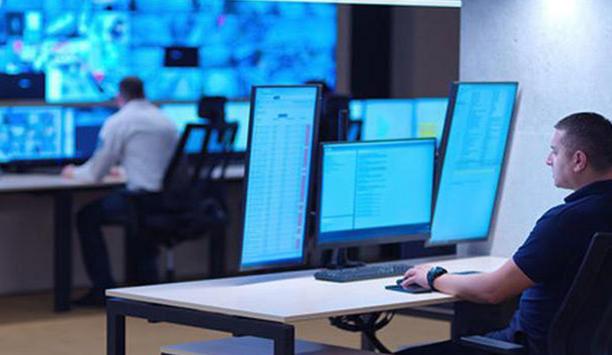
The borderless control room
Download
Wireless Access Control eBook
Download
Six things to look for when adding AI cameras to your operation
Download
The inevitability of The Cloud
Download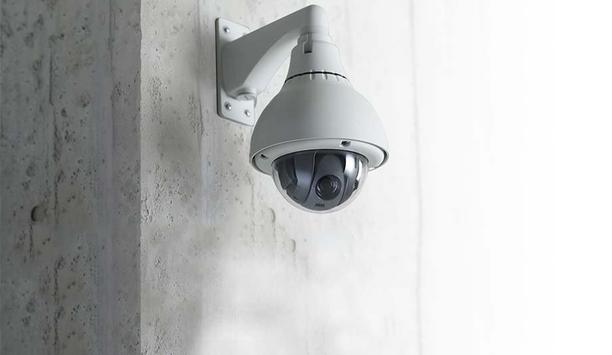
Security investments retailers should consider for their 2021 budget
Download
Enhanced Ethernet Technology (ePoE)
Download
IP in a box: The advantages of embedded network video recorders
Download
Selecting the right network video recorder (NVR) for any vertical market
Download
Improving city mobility using connected video technology
Download
Video technology: making cities safer & improving lives
Download
Protecting dormitory residents and assets
Download
Choosing the right storage technology for video surveillance
Download
Video surveillance as a service: Why are video management systems migrating to the Cloud?
Download
11 reasons video surveillance is moving to the cloud
Download
The borderless control room
Download
Wireless Access Control eBook
Download
Six things to look for when adding AI cameras to your operation
Download
The inevitability of The Cloud
Download
Security investments retailers should consider for their 2021 budget
Download
Enhanced Ethernet Technology (ePoE)
Download
IP in a box: The advantages of embedded network video recorders
Download
Selecting the right network video recorder (NVR) for any vertical market
Download
Improving city mobility using connected video technology
Download
Video technology: making cities safer & improving lives
Download
Protecting dormitory residents and assets
Download
Choosing the right storage technology for video surveillance
Download
Video surveillance as a service: Why are video management systems migrating to the Cloud?
Download
11 reasons video surveillance is moving to the cloud
Download

Videos
Network Video Recorders: Manufacturers & Suppliers
- Hikvision Network Video Recorders
- Dahua Technology Network Video Recorders
- exacqVision Network Video Recorders
- ADPRO Network Video Recorders
- Vicon Network Video Recorders
- Hanwha Vision Network Video Recorders
- Axis Communications Network Video Recorders
- Avigilon Network Video Recorders
- Milesight Network Video Recorders
- LILIN Network Video Recorders
- MOBOTIX Network Video Recorders
- Illustra Network Video Recorders
- Verkada Network Video Recorders
- Bosch Network Video Recorders
- AV Costar Network Video Recorders
- Milestone Network Video Recorders
- IDIS Network Video Recorders
- BCDVideo Network Video Recorders
- Speco Technologies Network Video Recorders
- March Networks Network Video Recorders

Using artificial intelligence (AI) to automate physical security systems
Download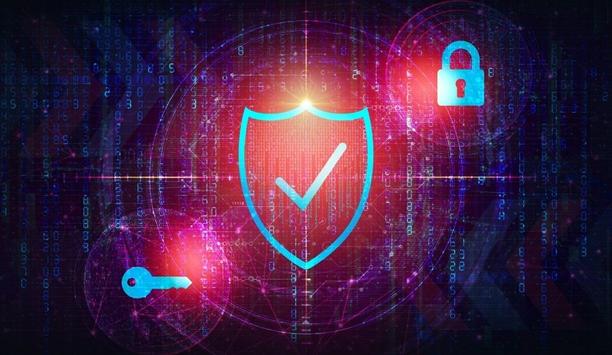
A modern guide to data loss prevention
Download
7 proven solutions for law enforcement key control and asset management
Download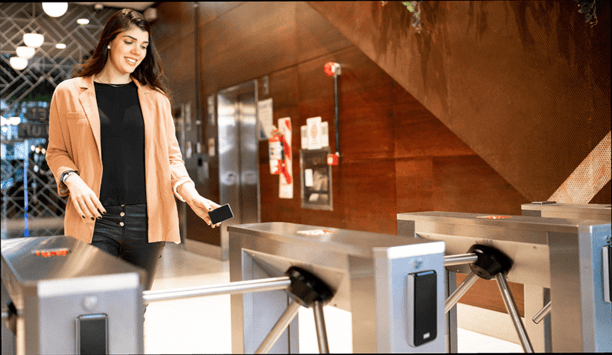
The truth behind 9 mobile access myths
Download
Access control system planning phase 2
Download